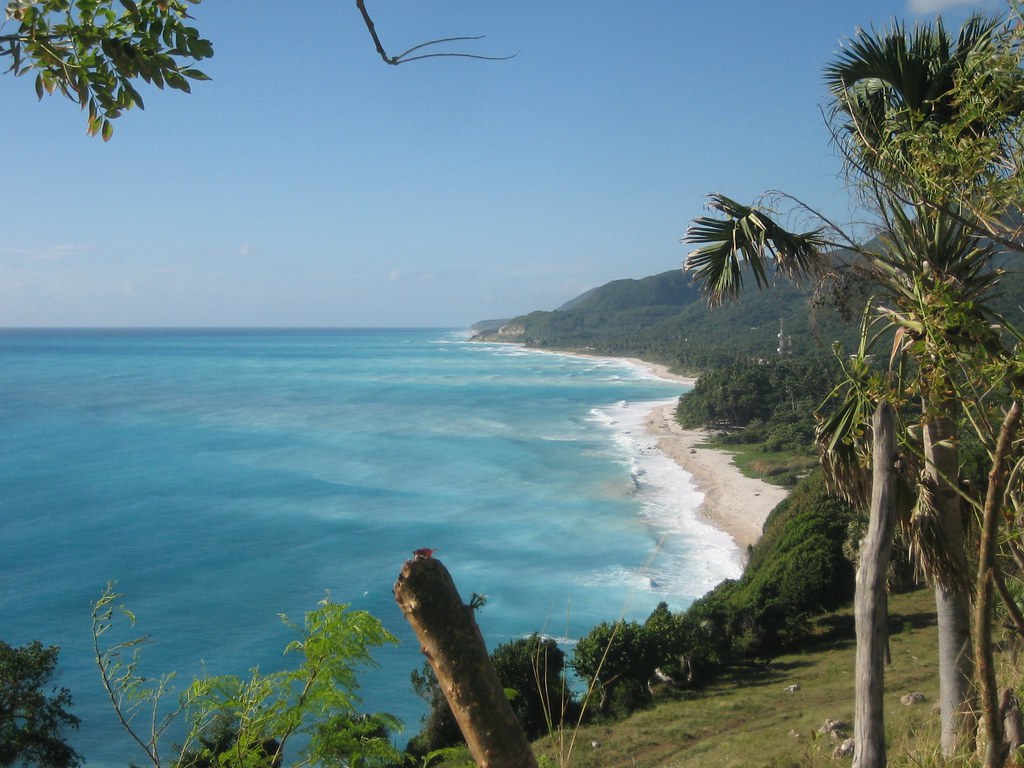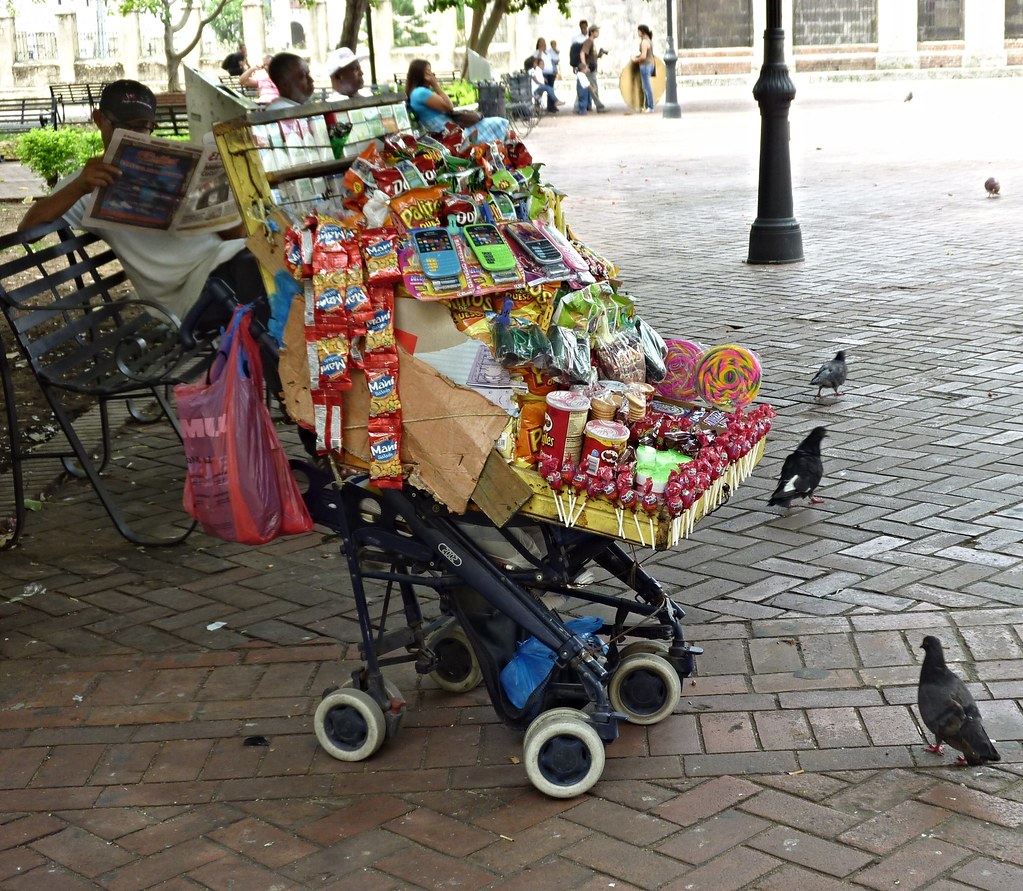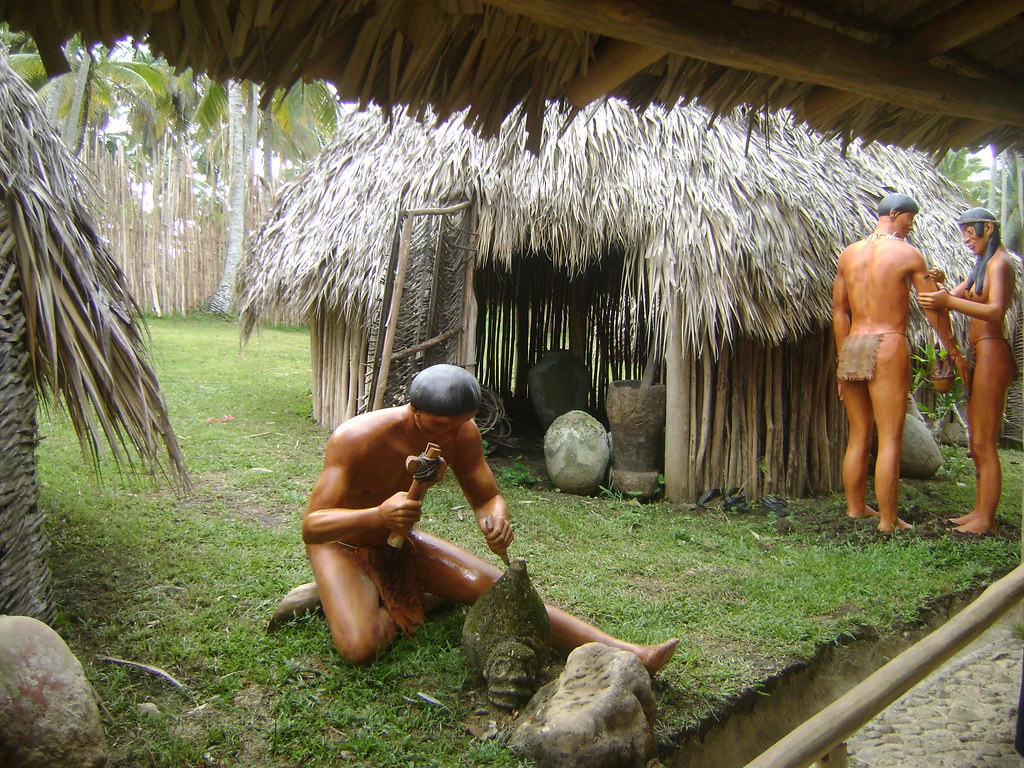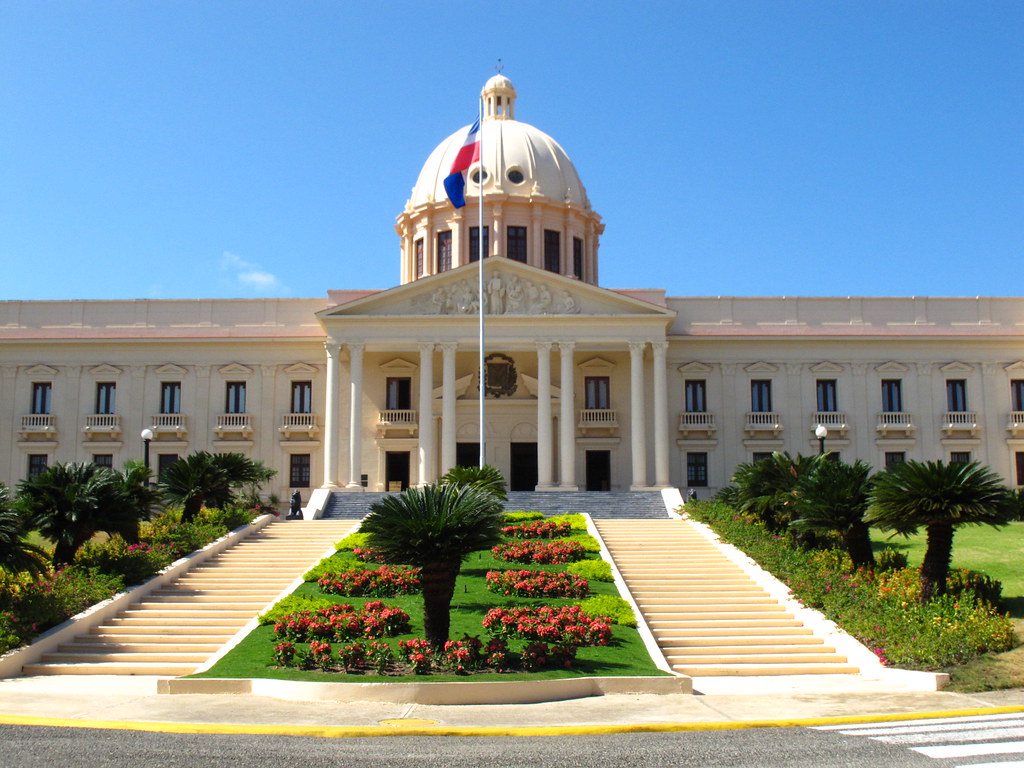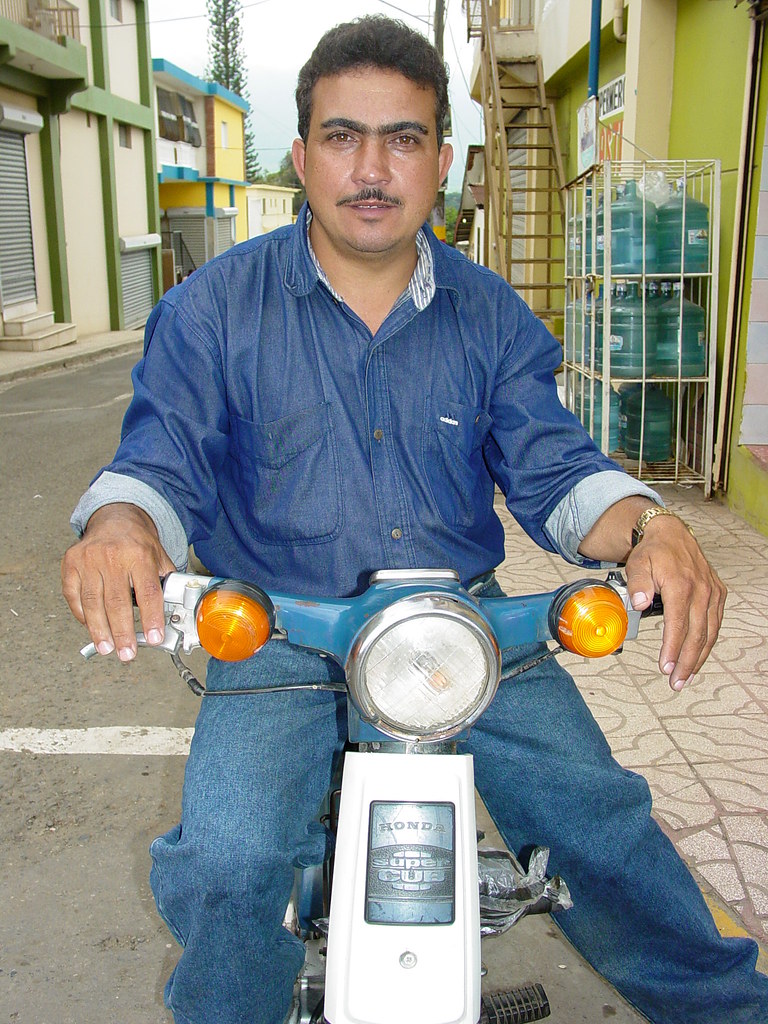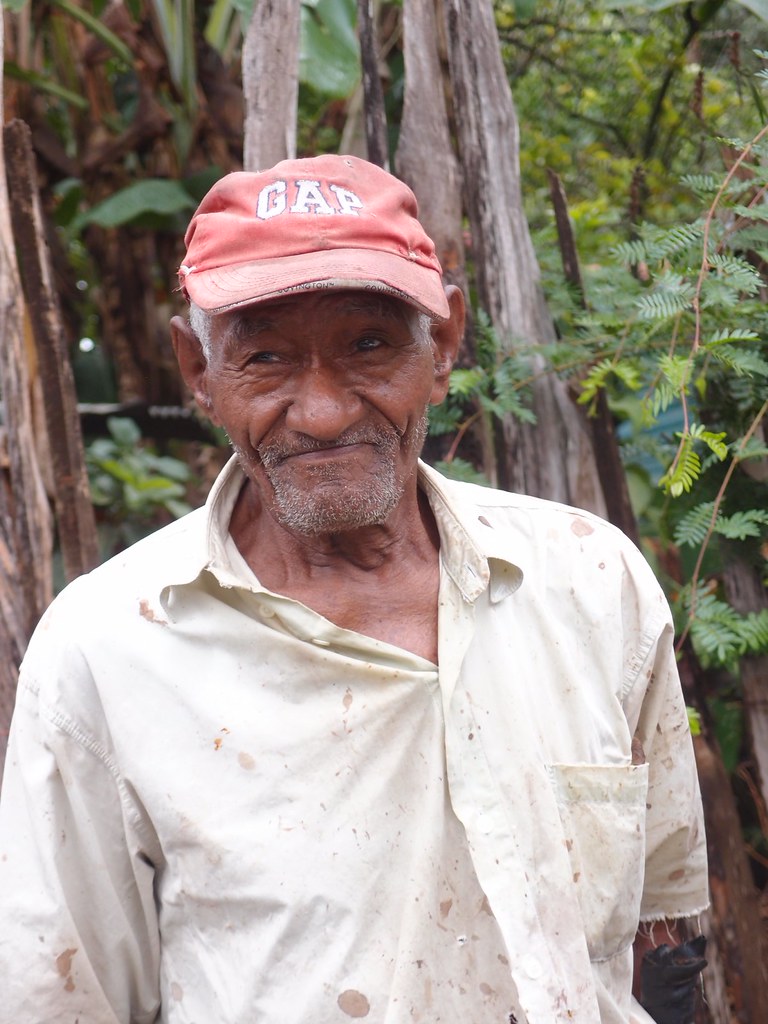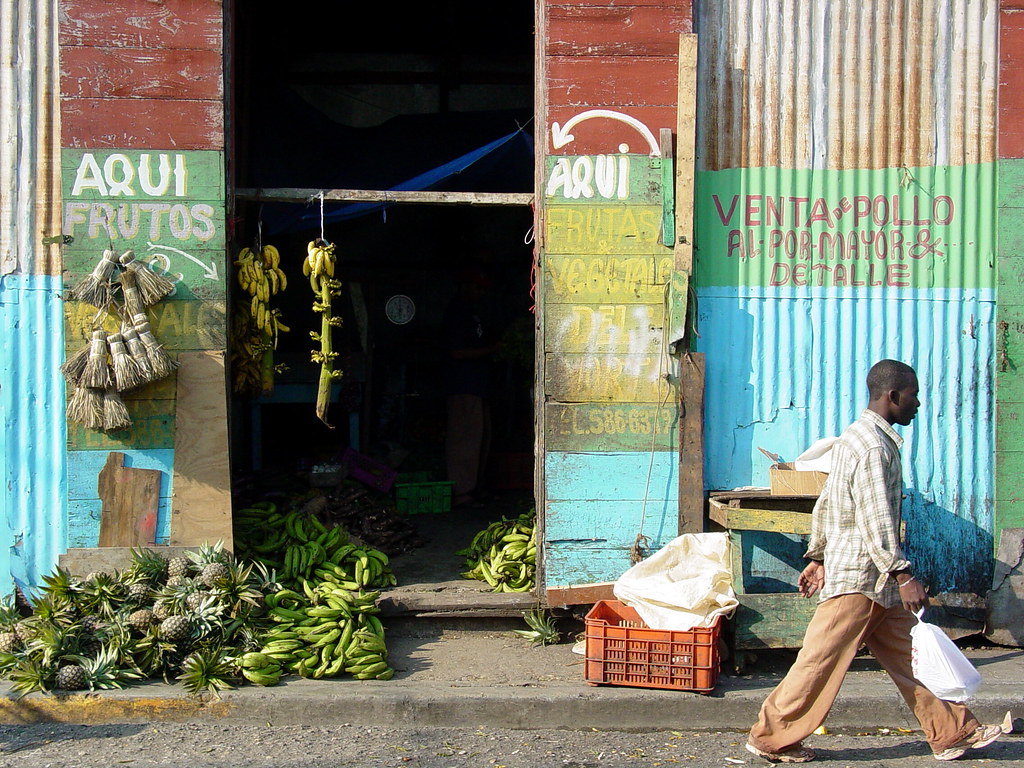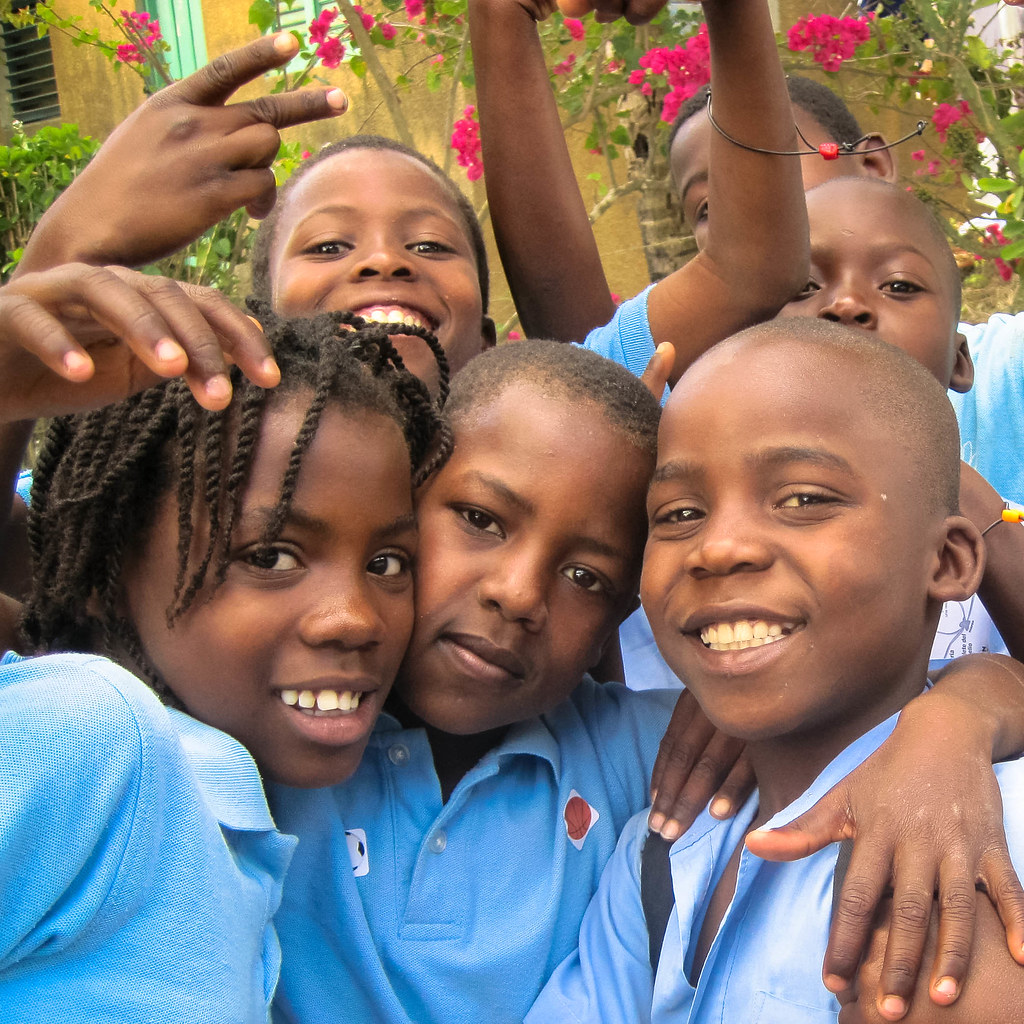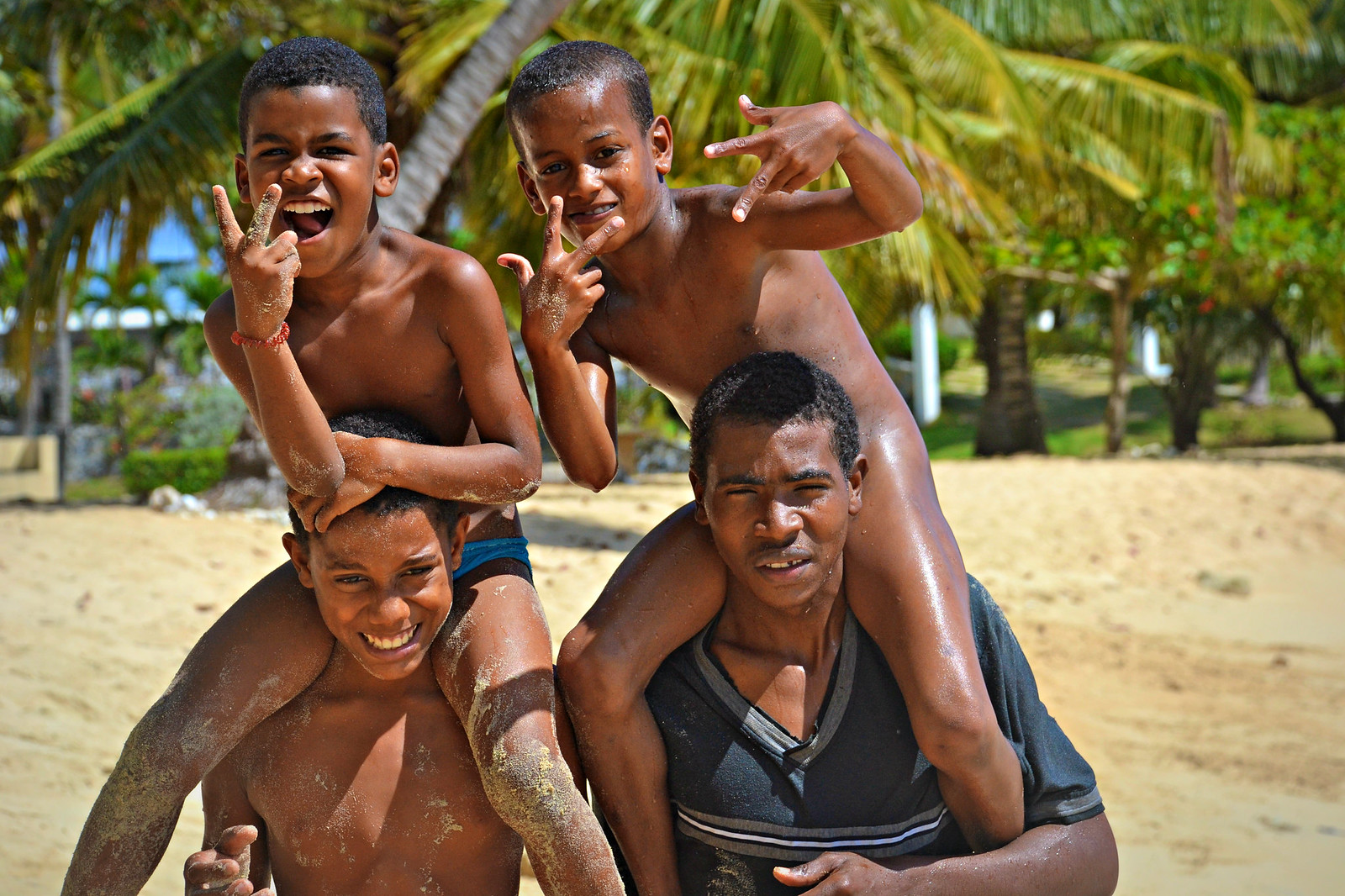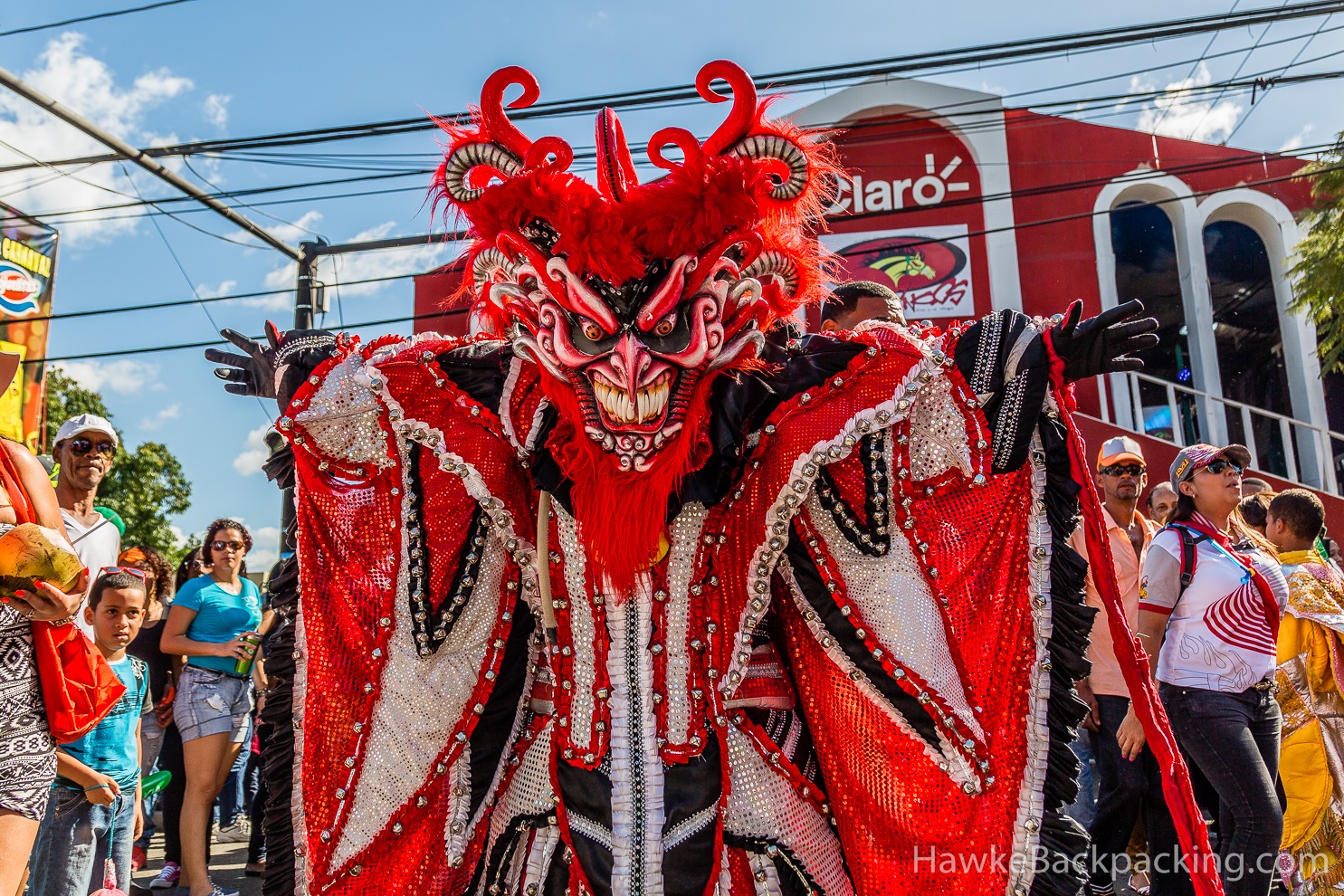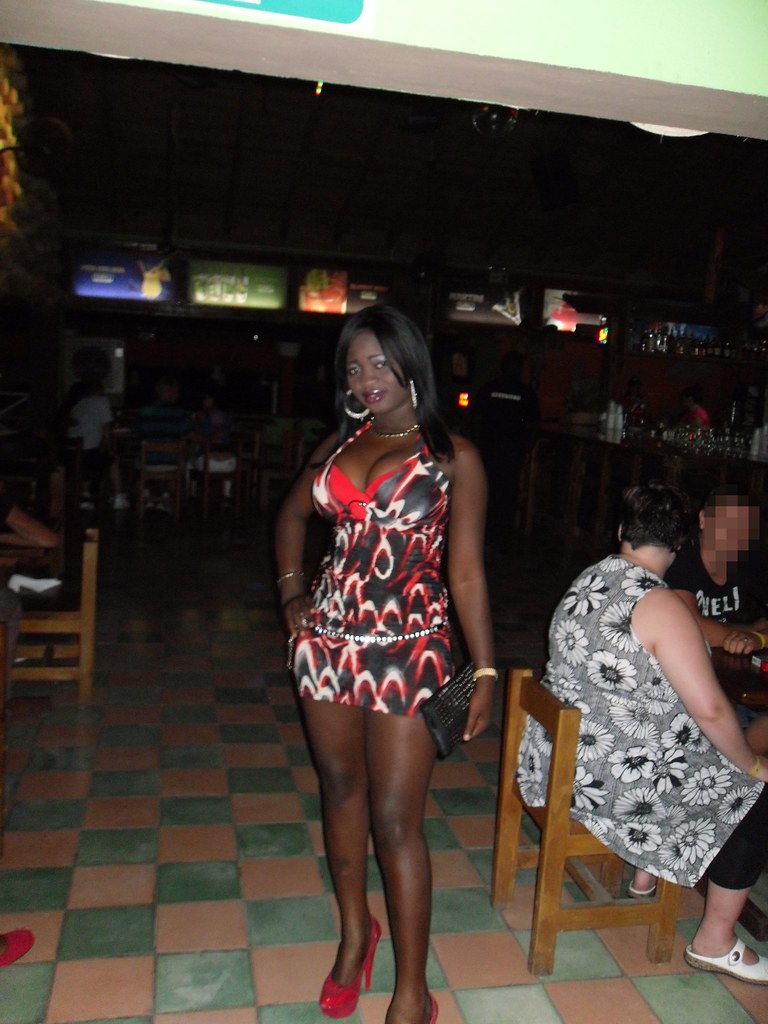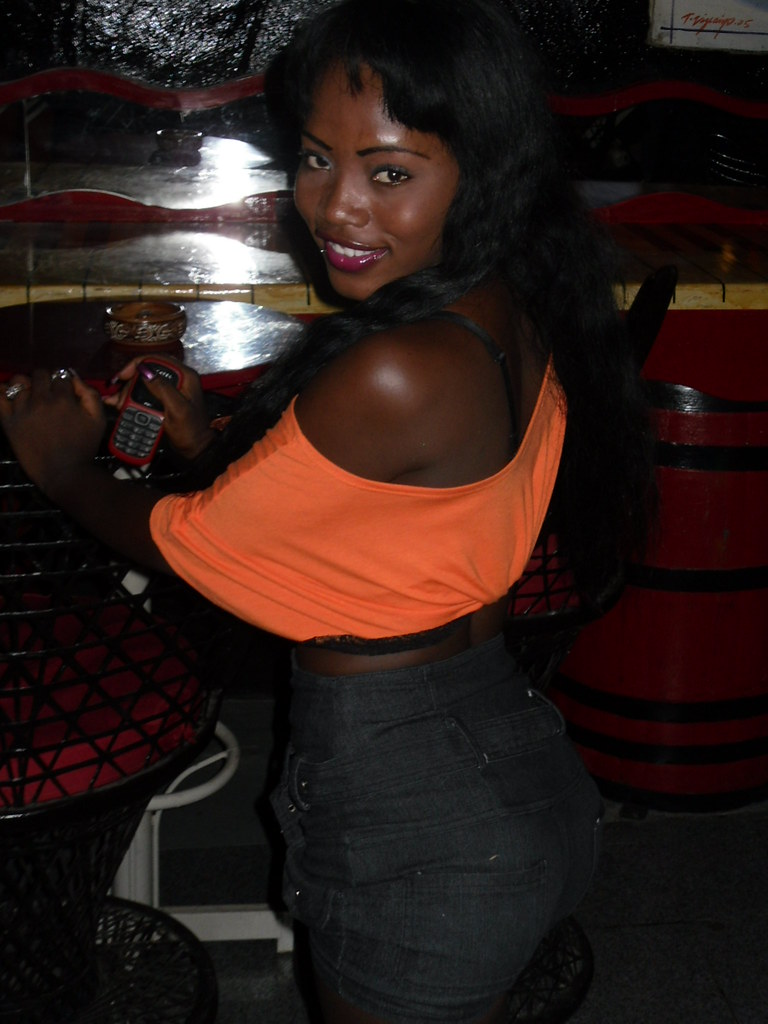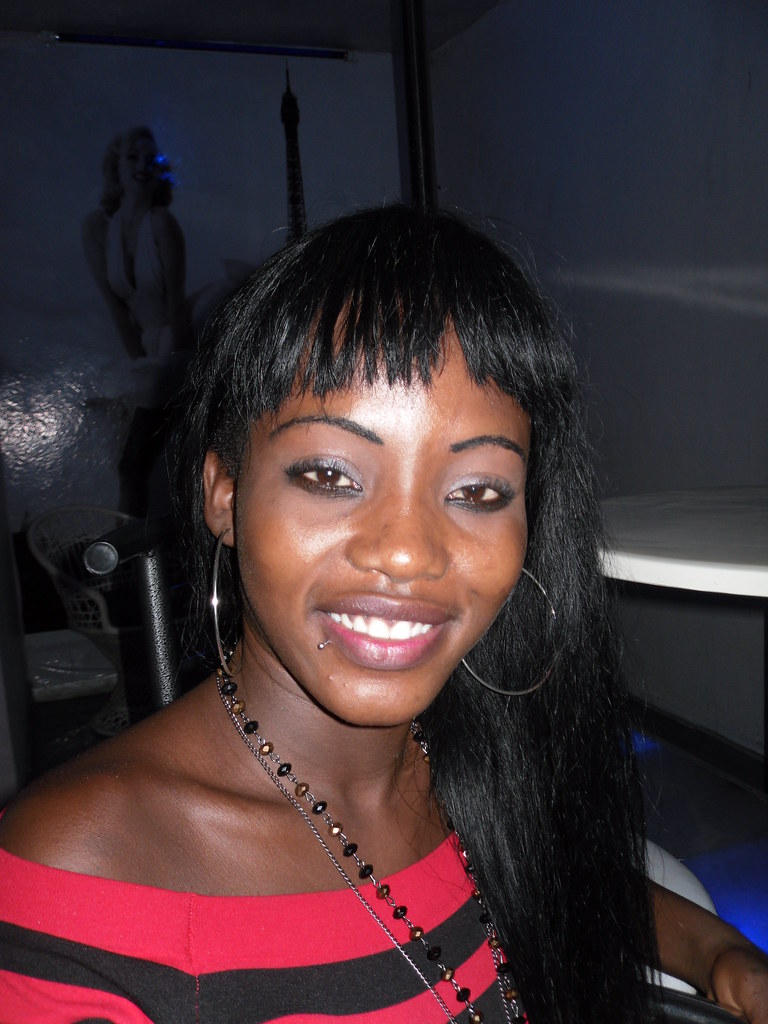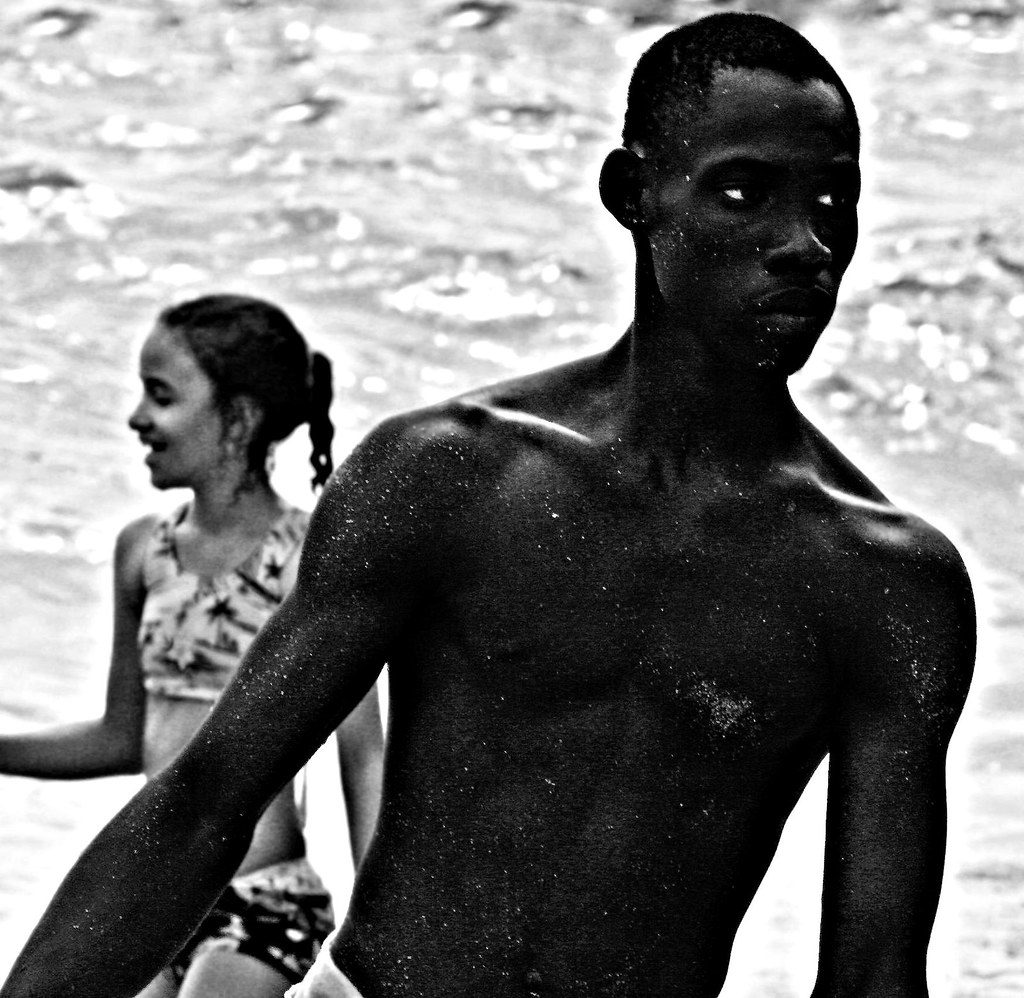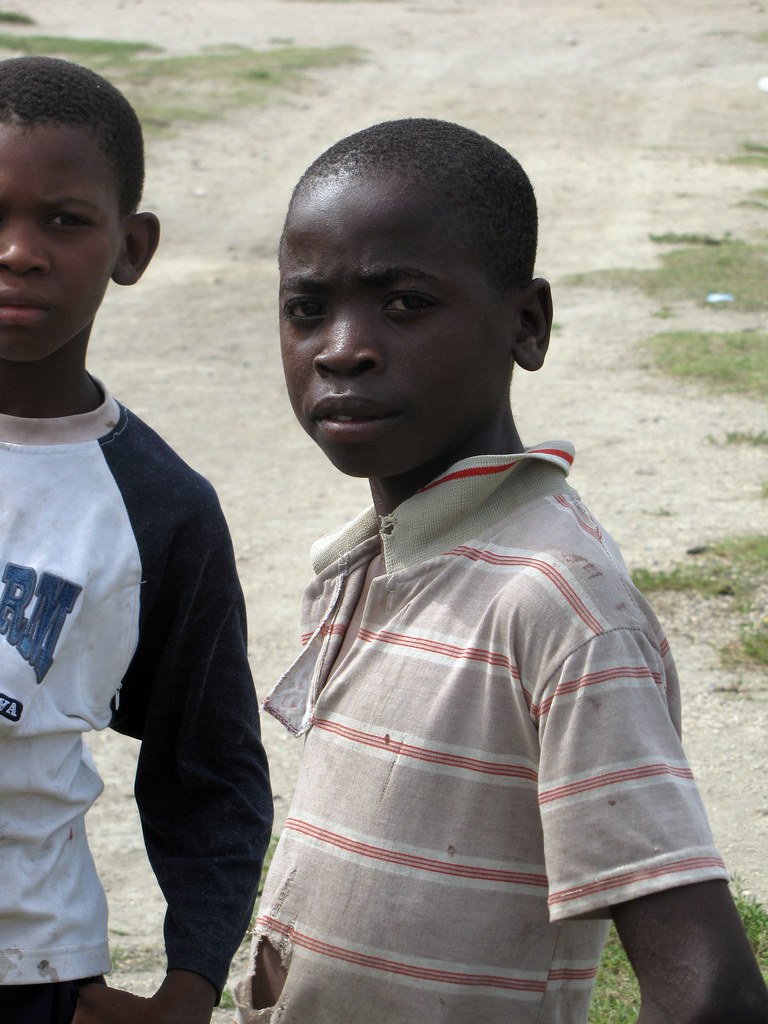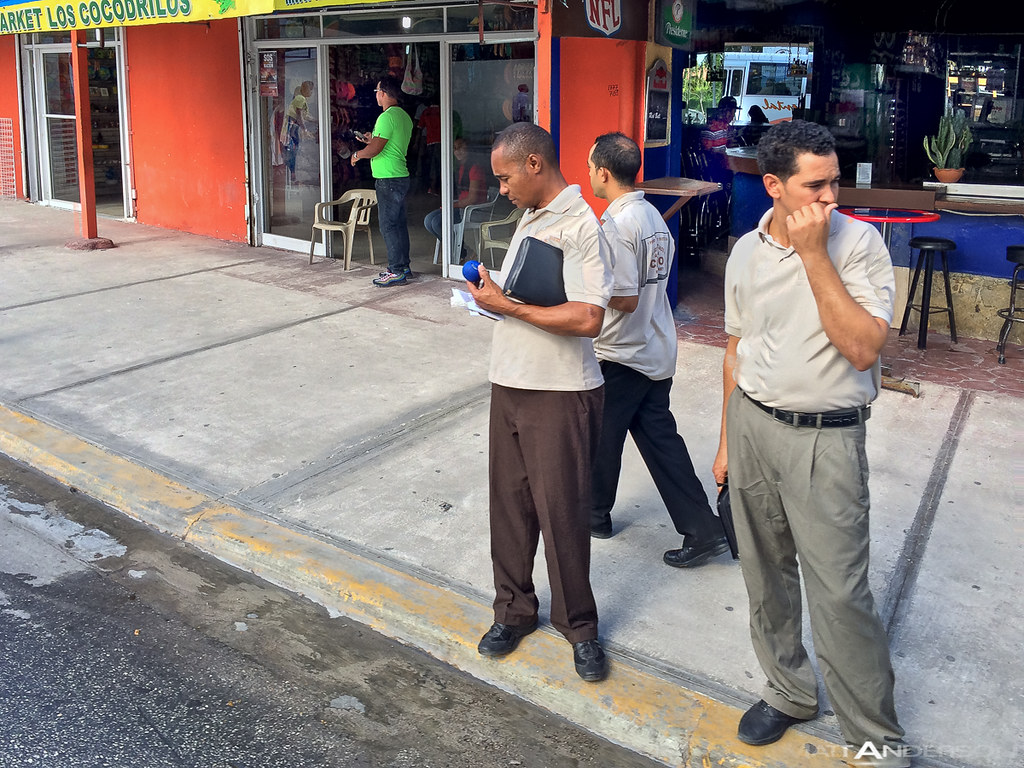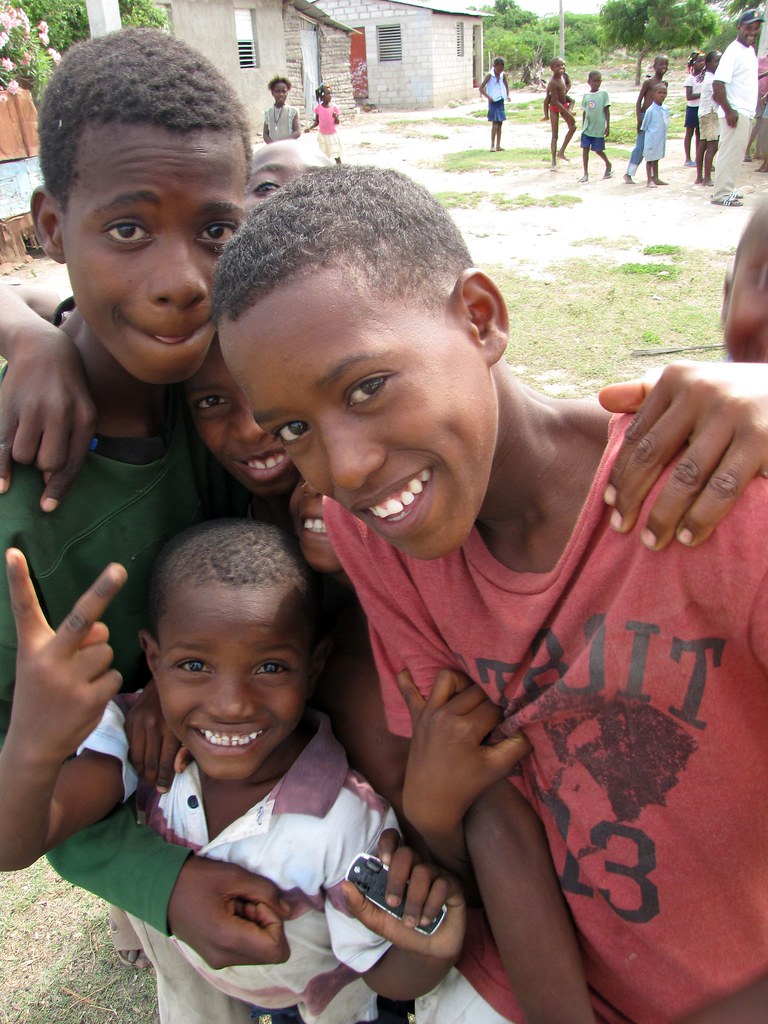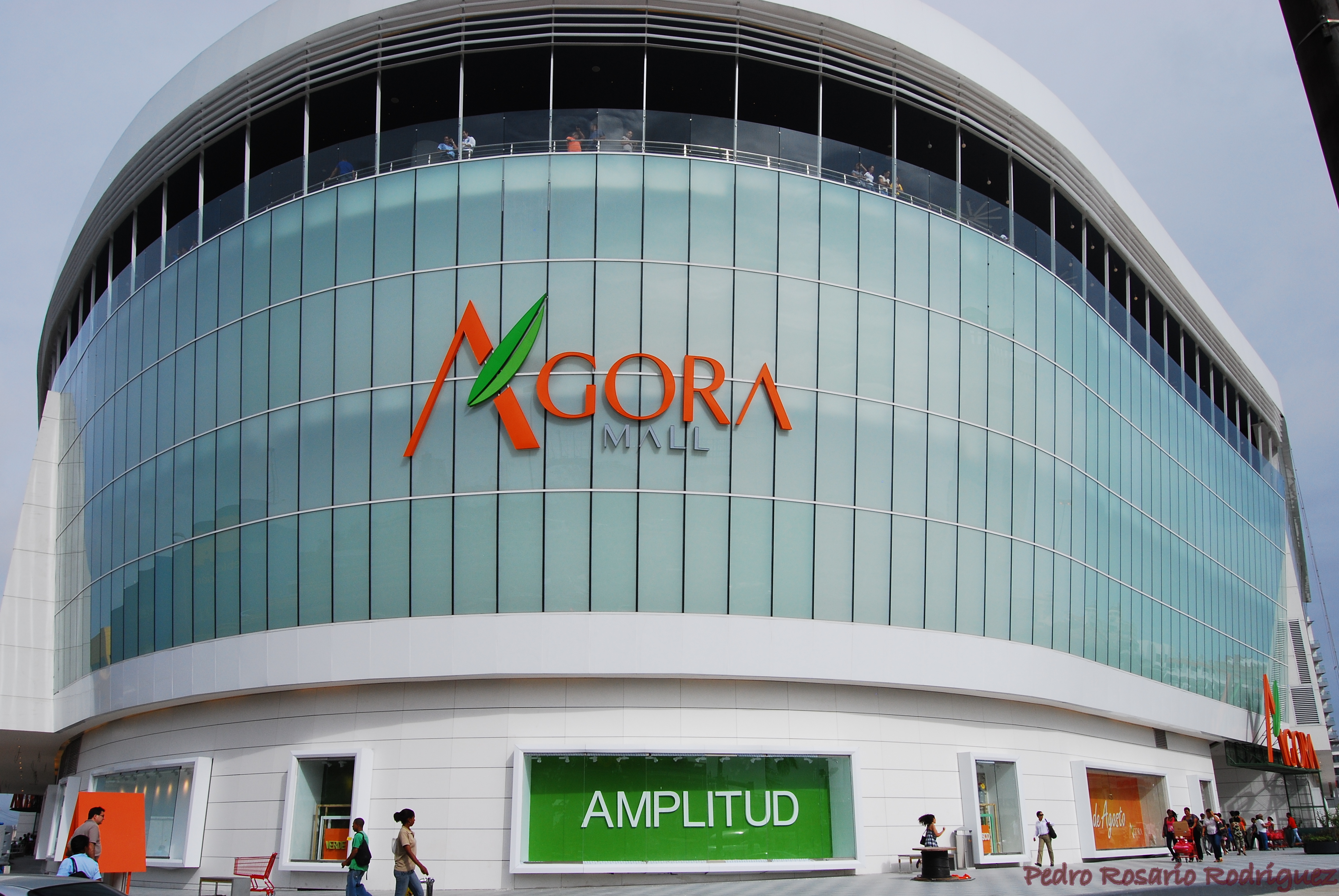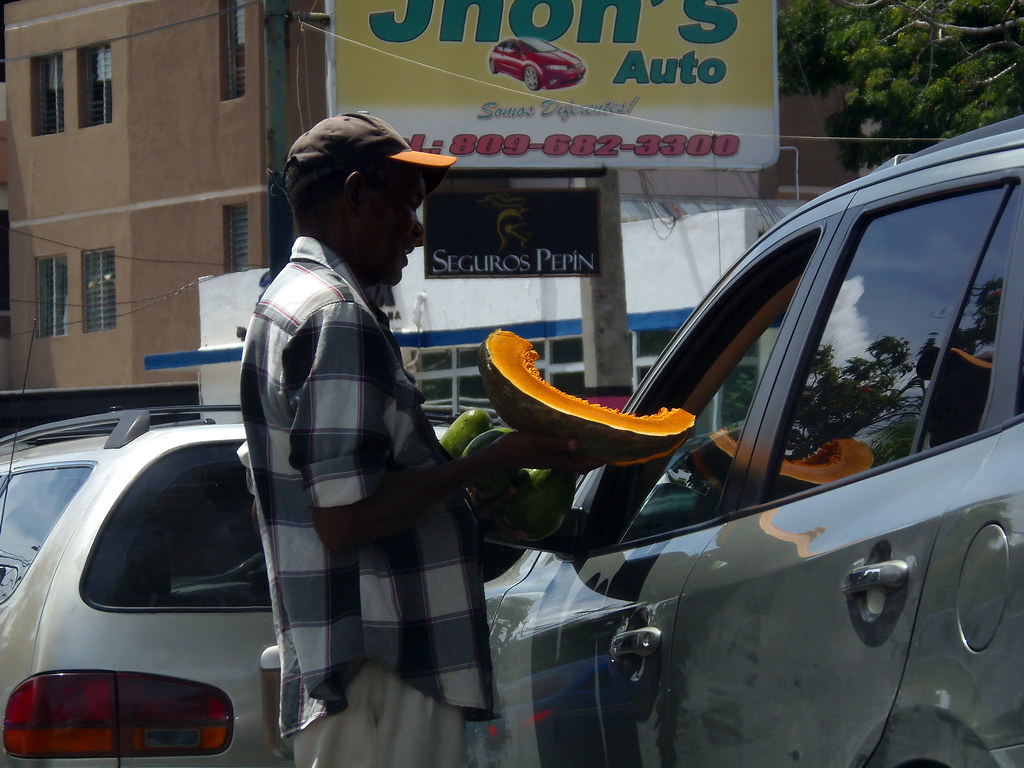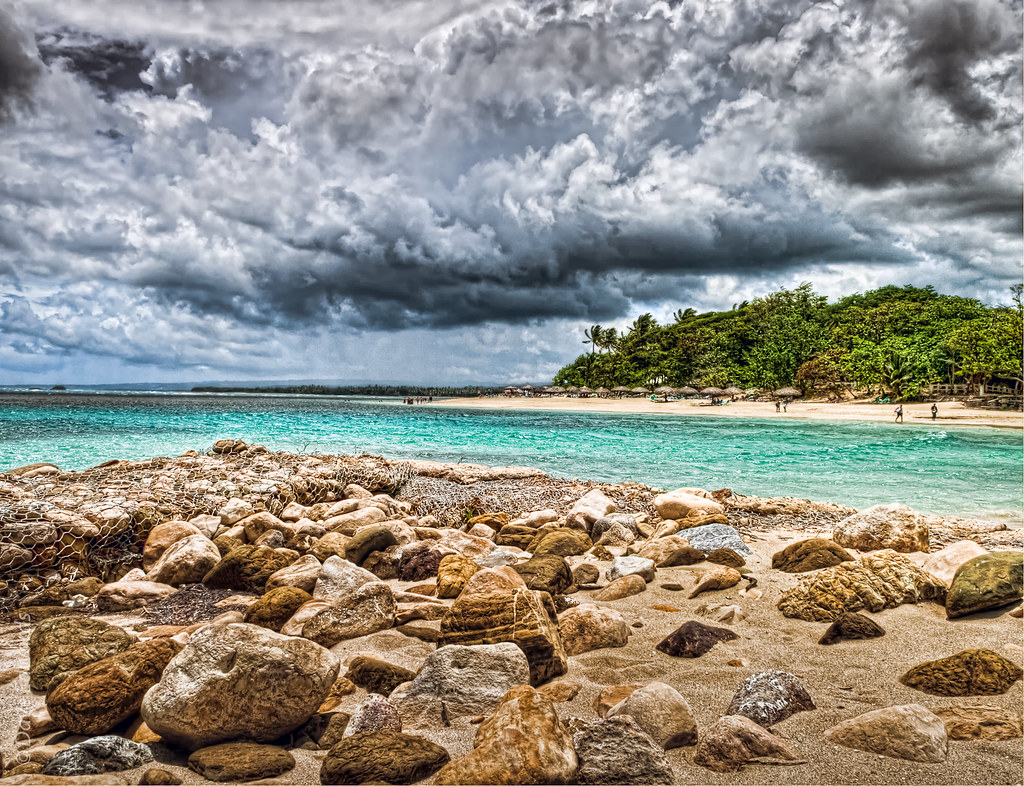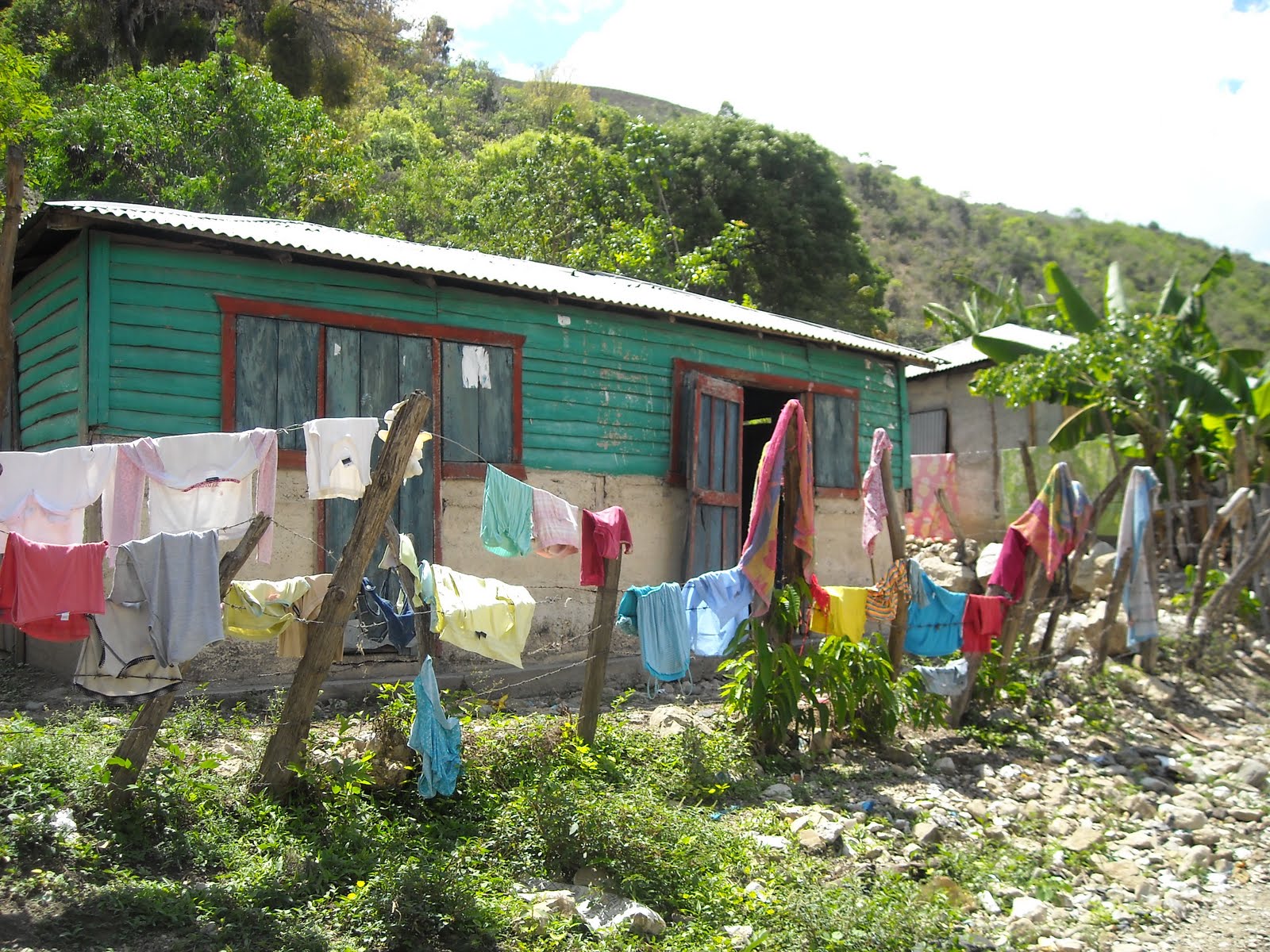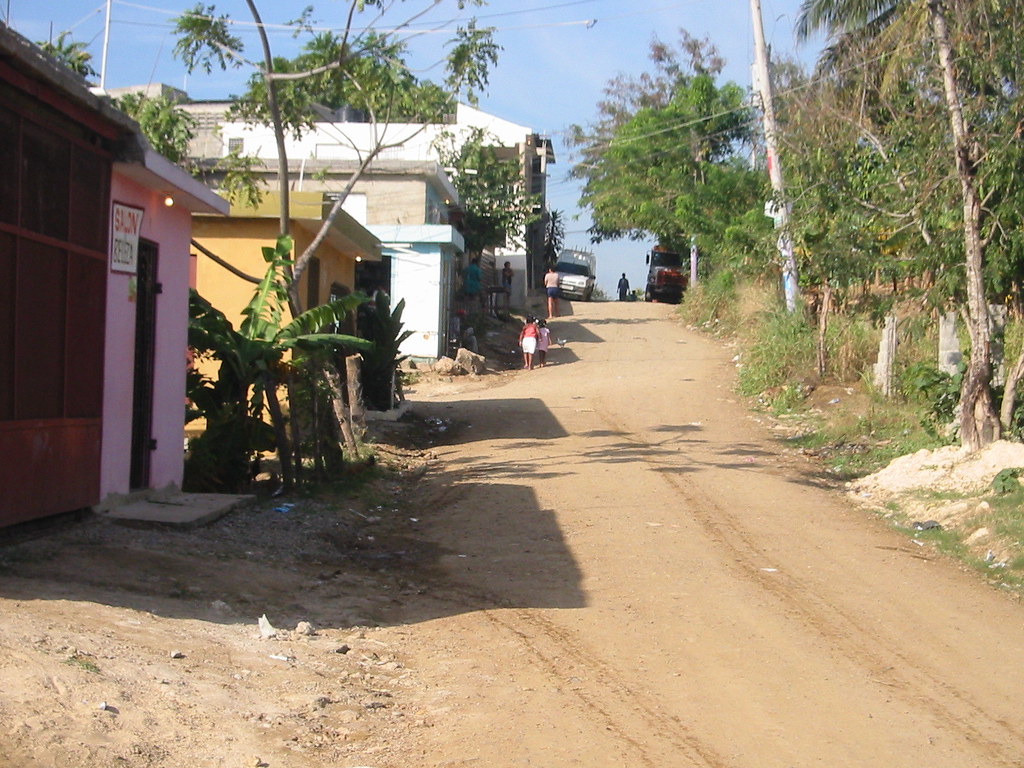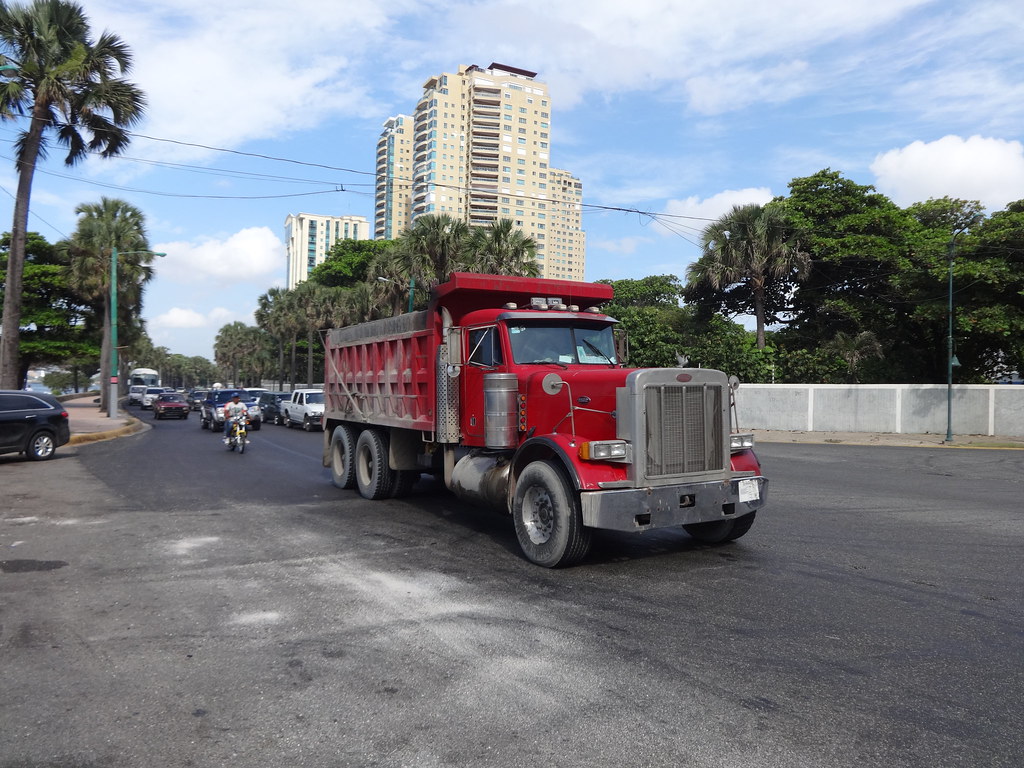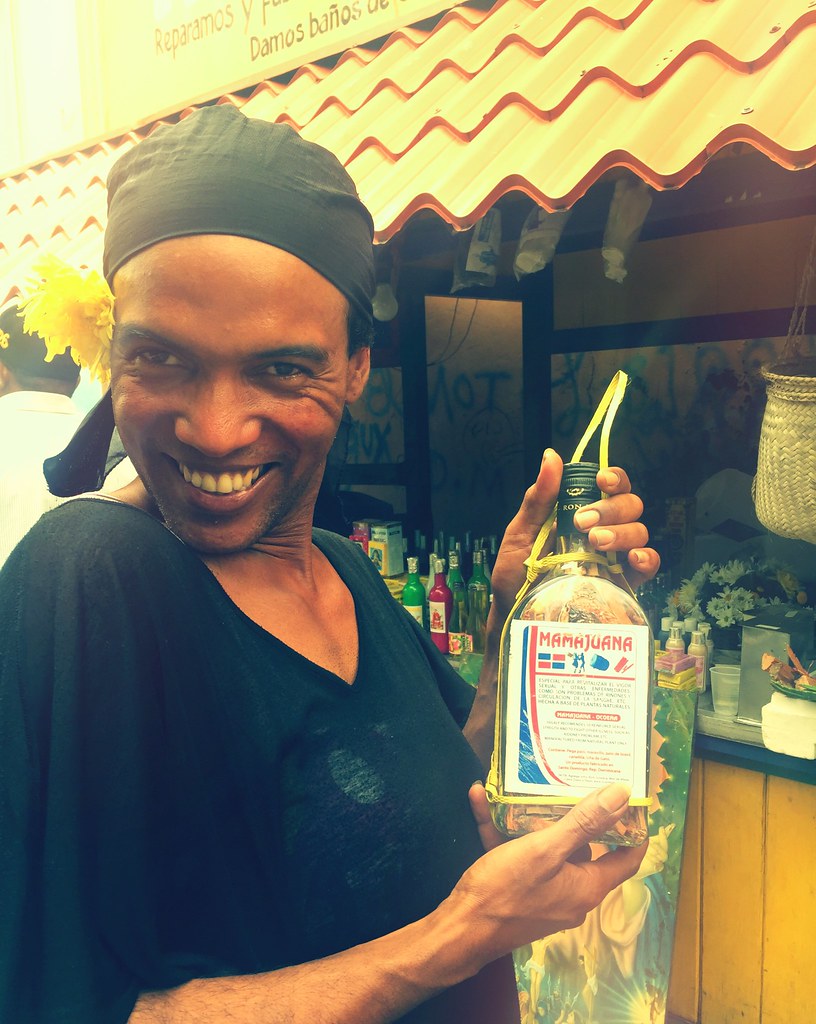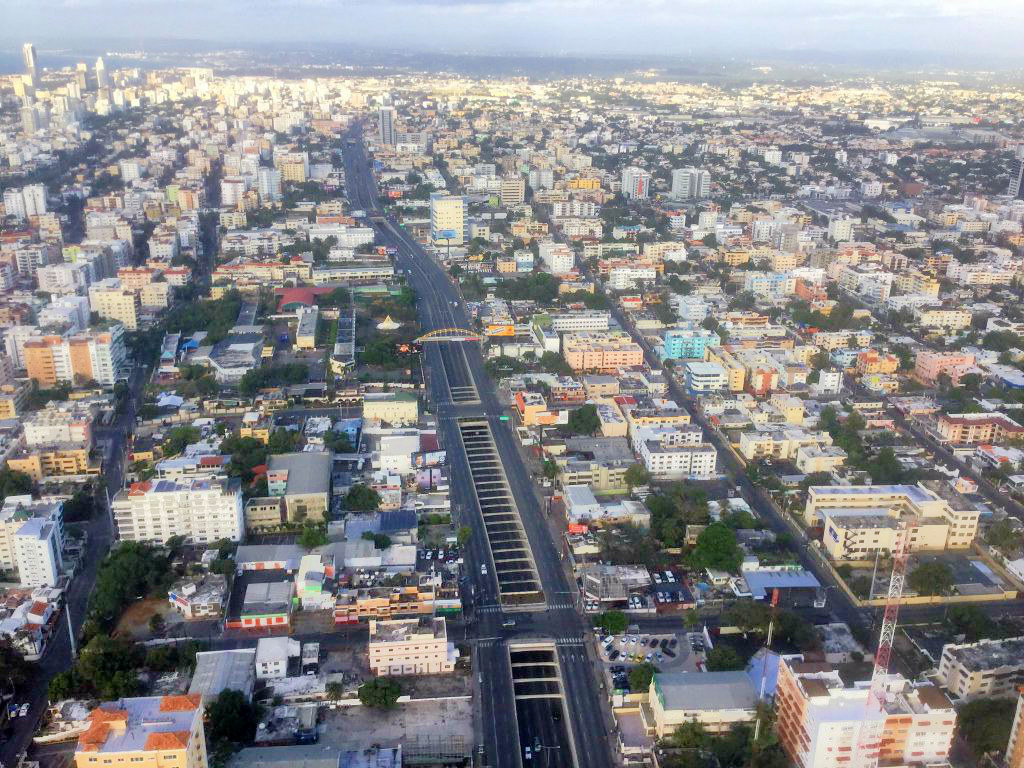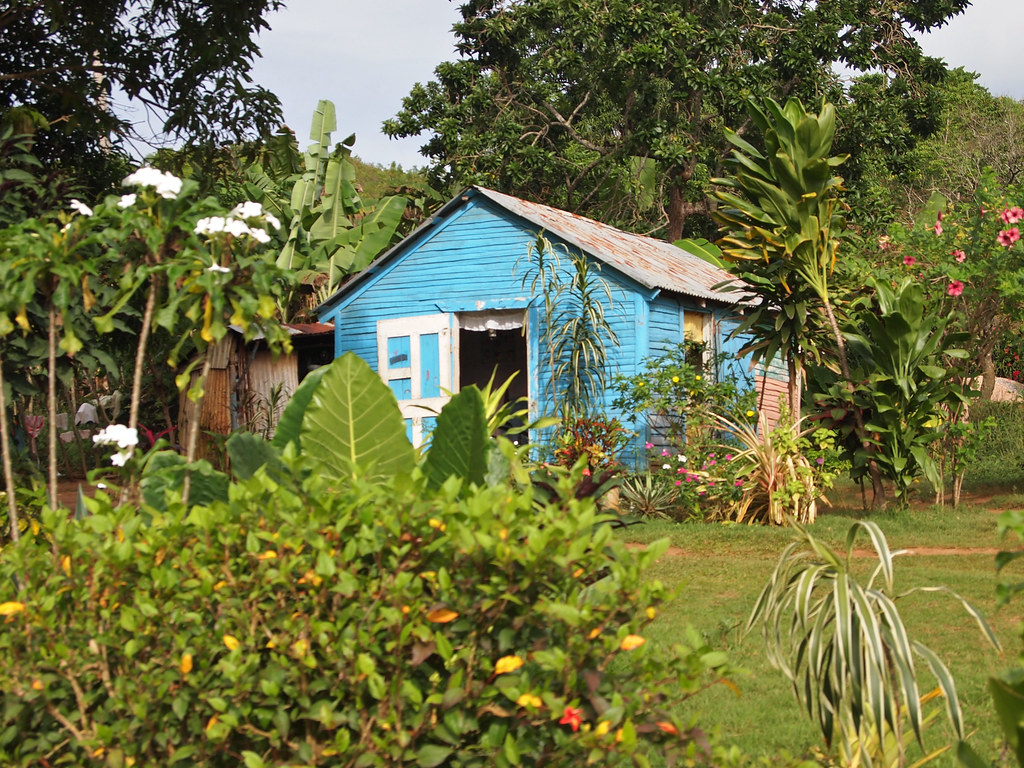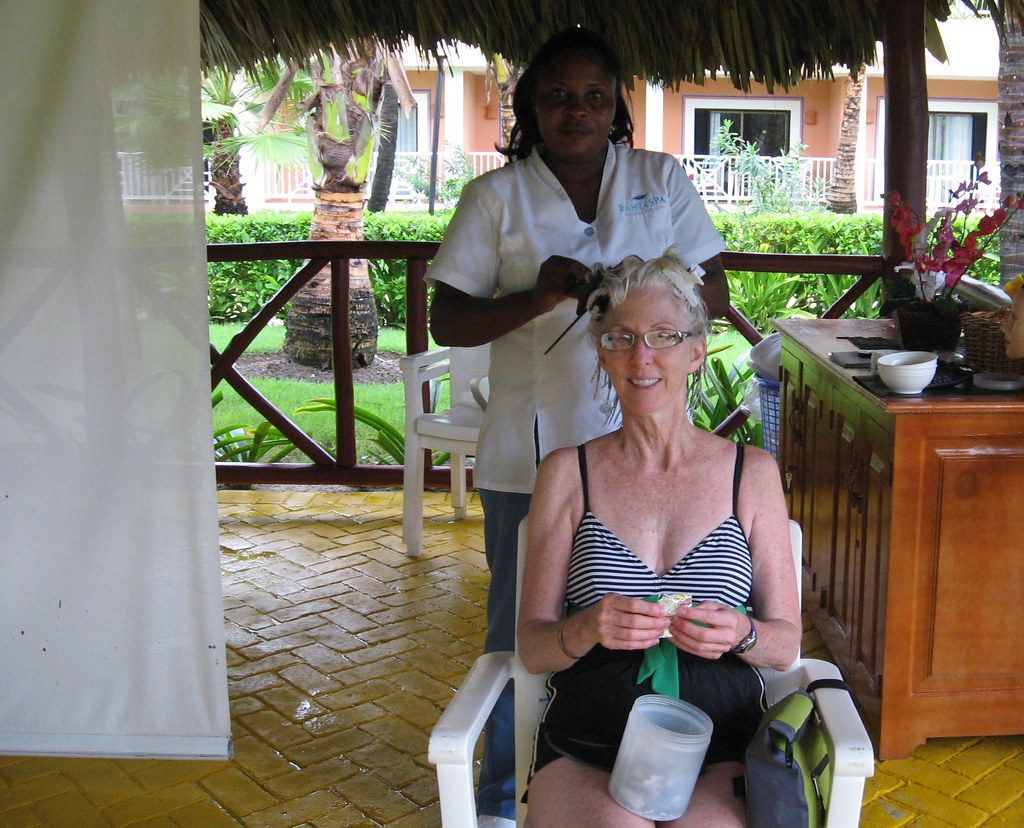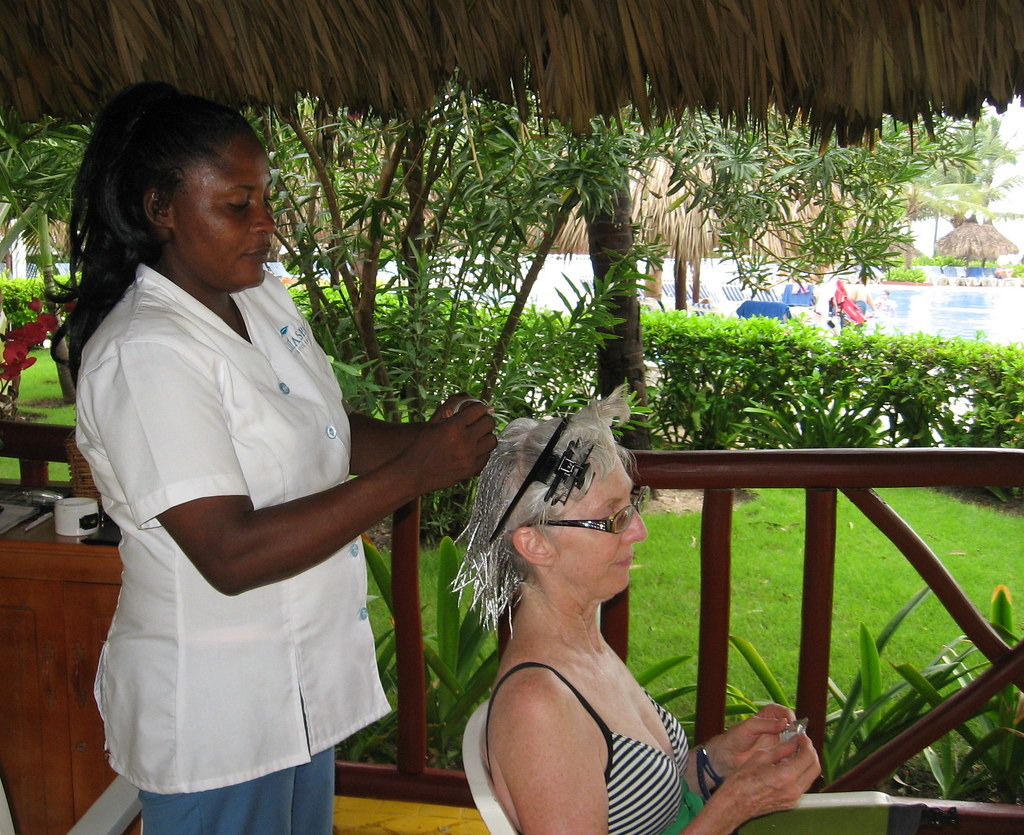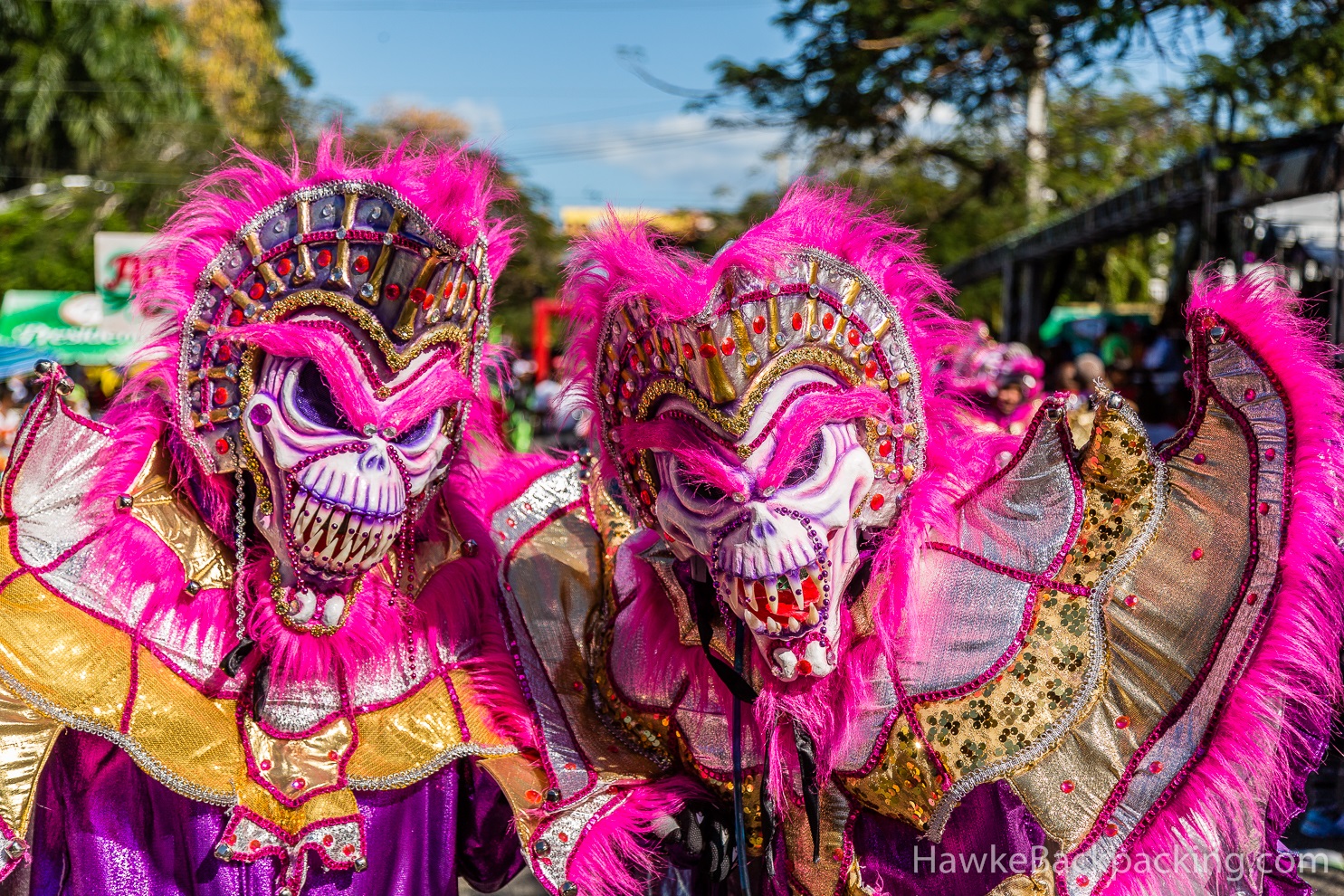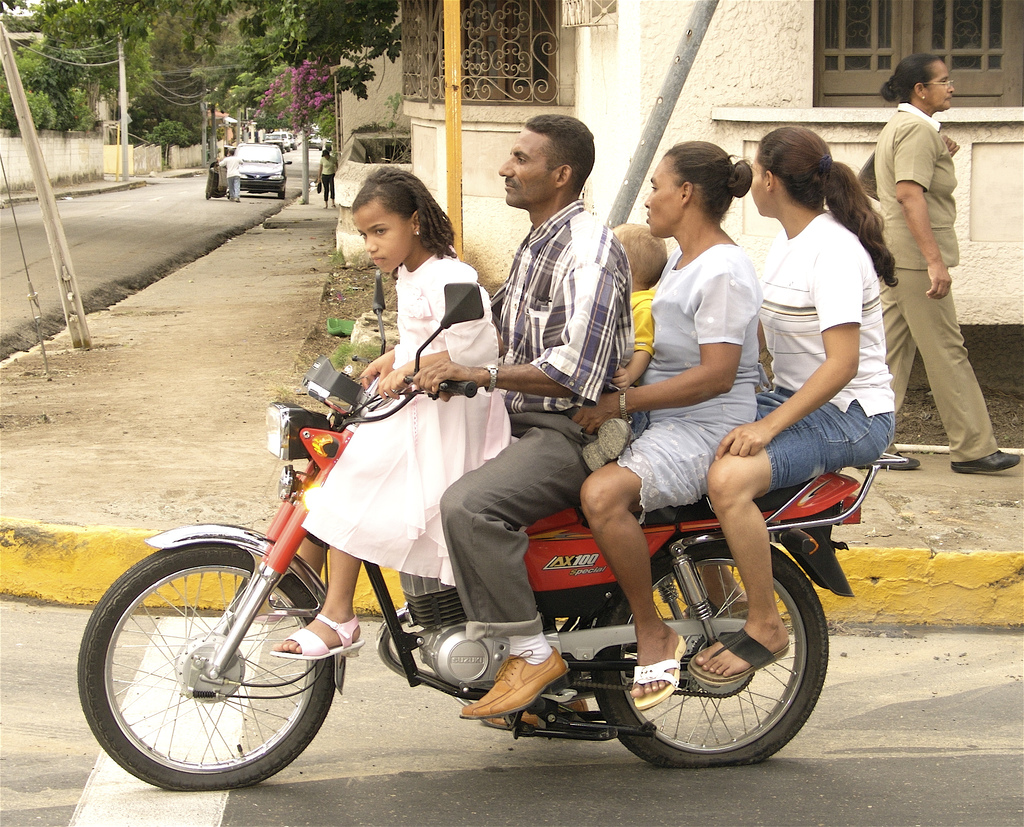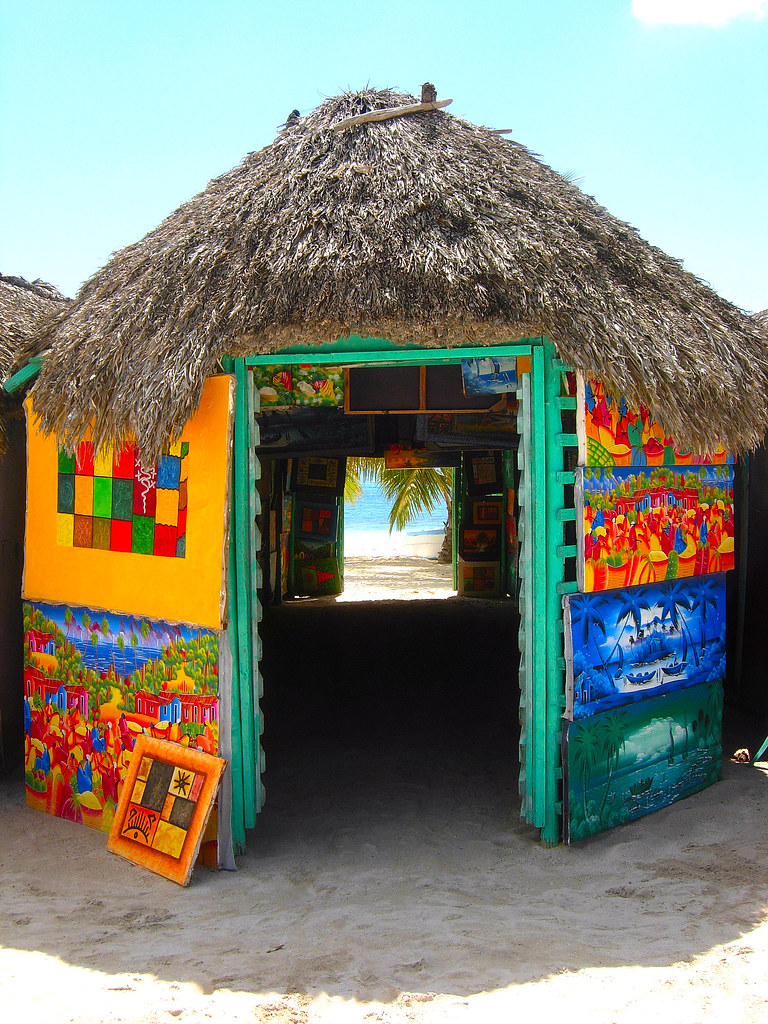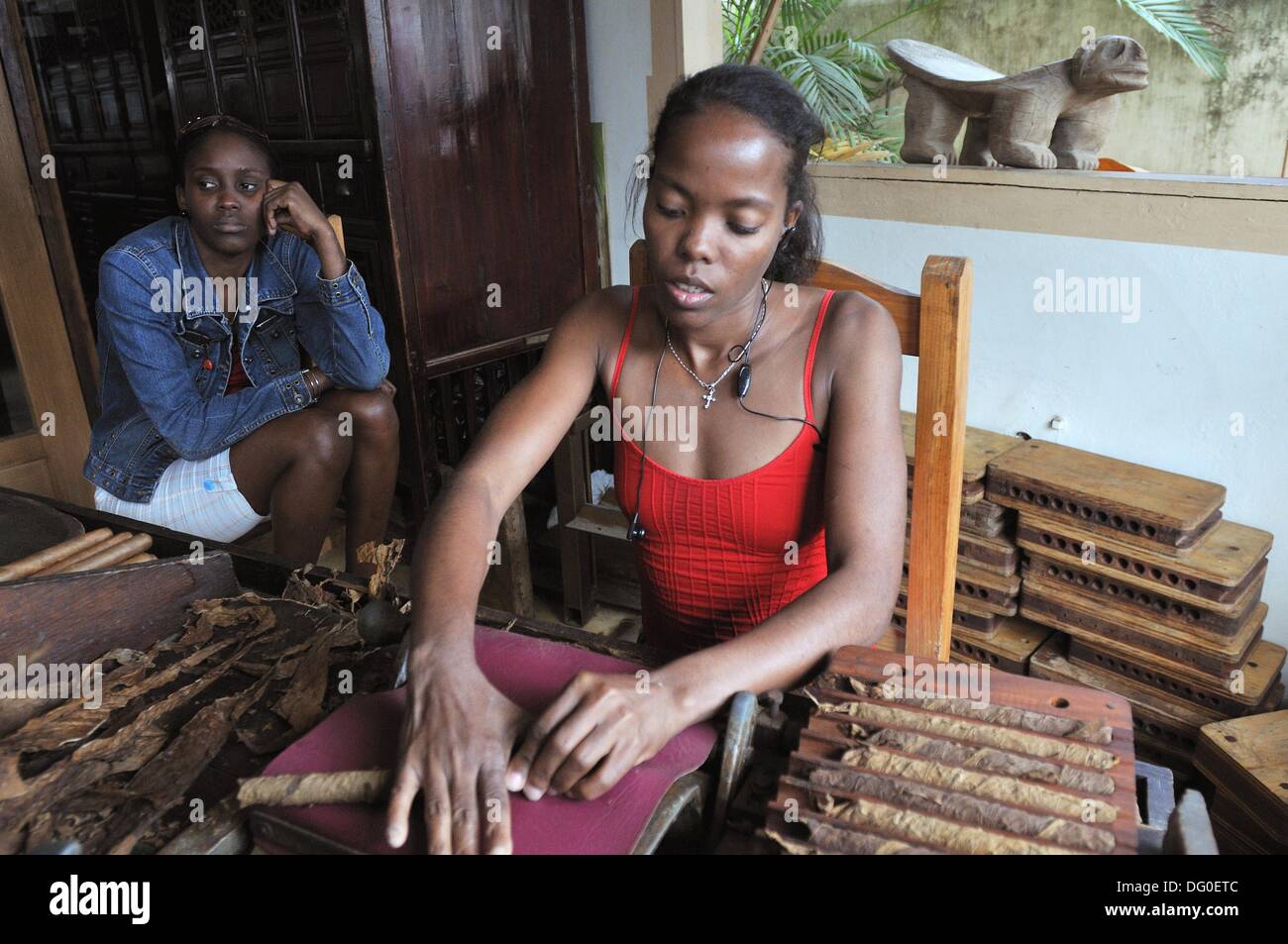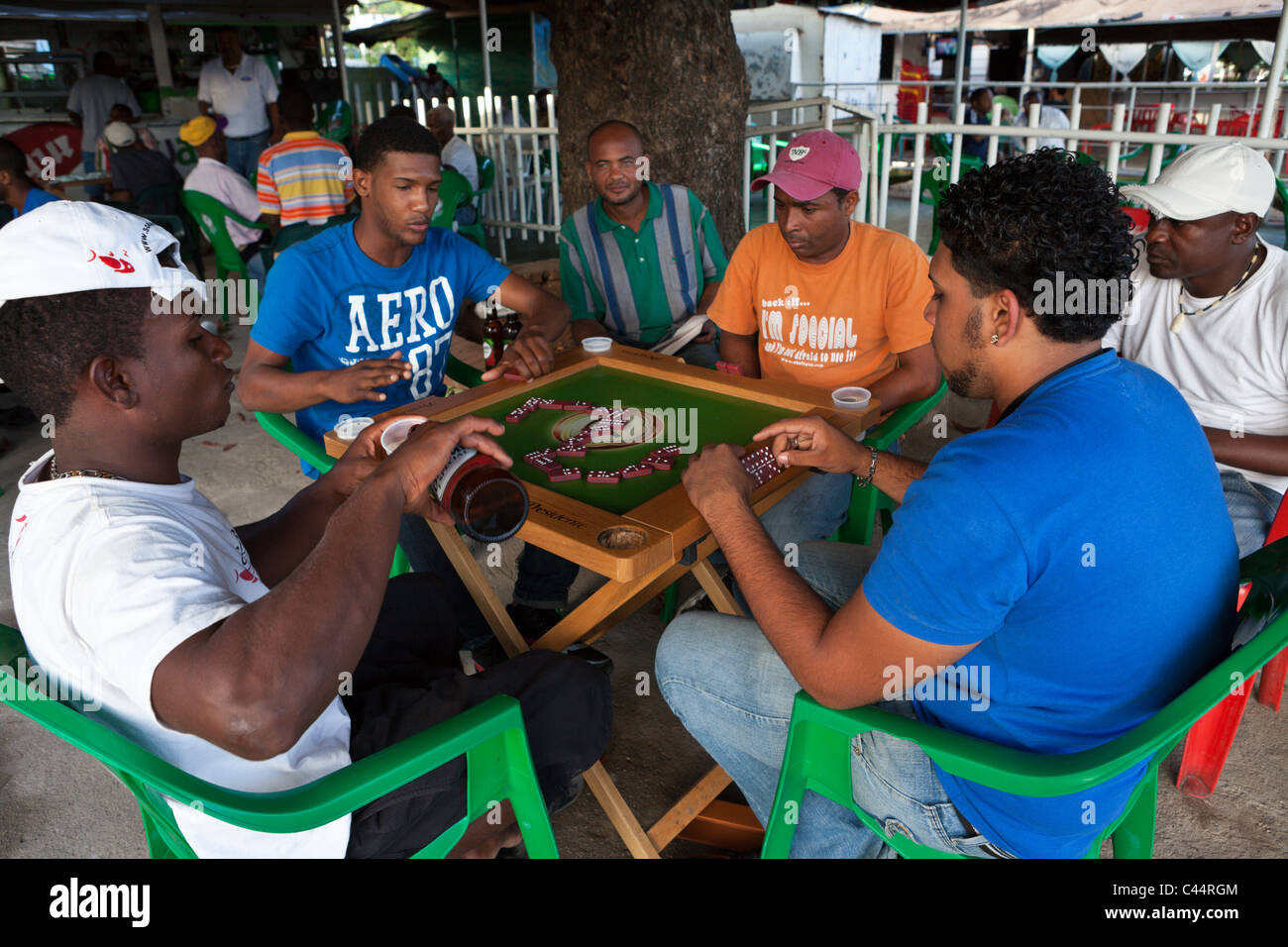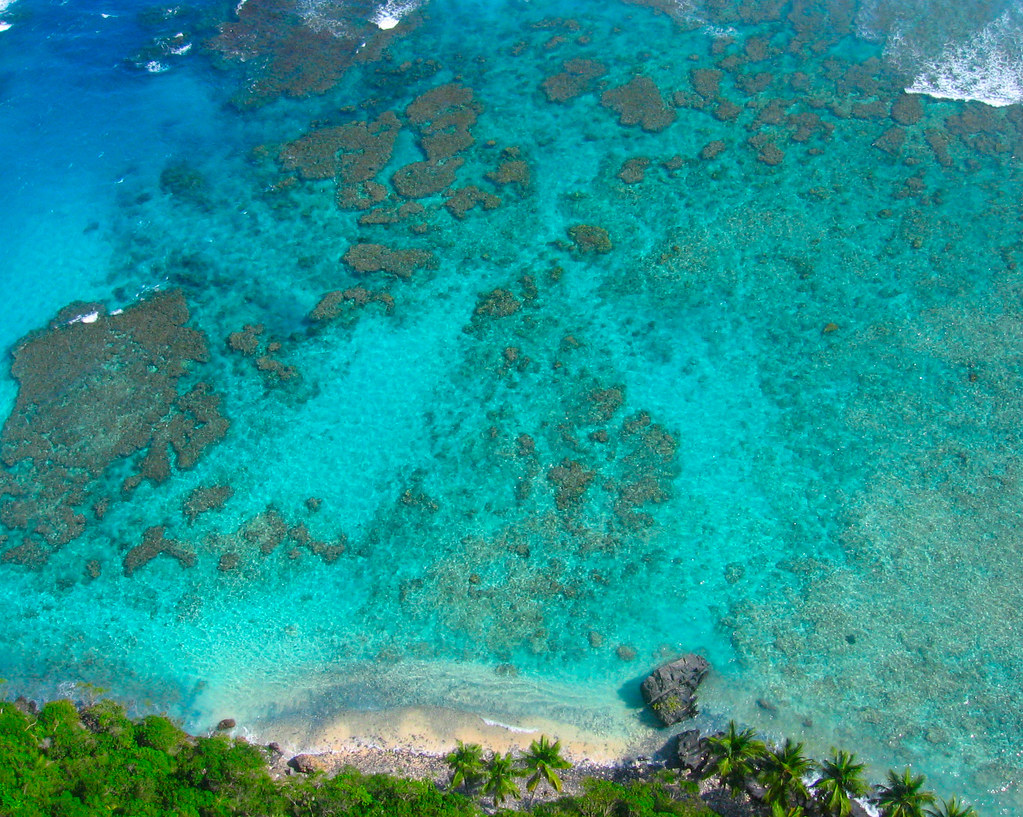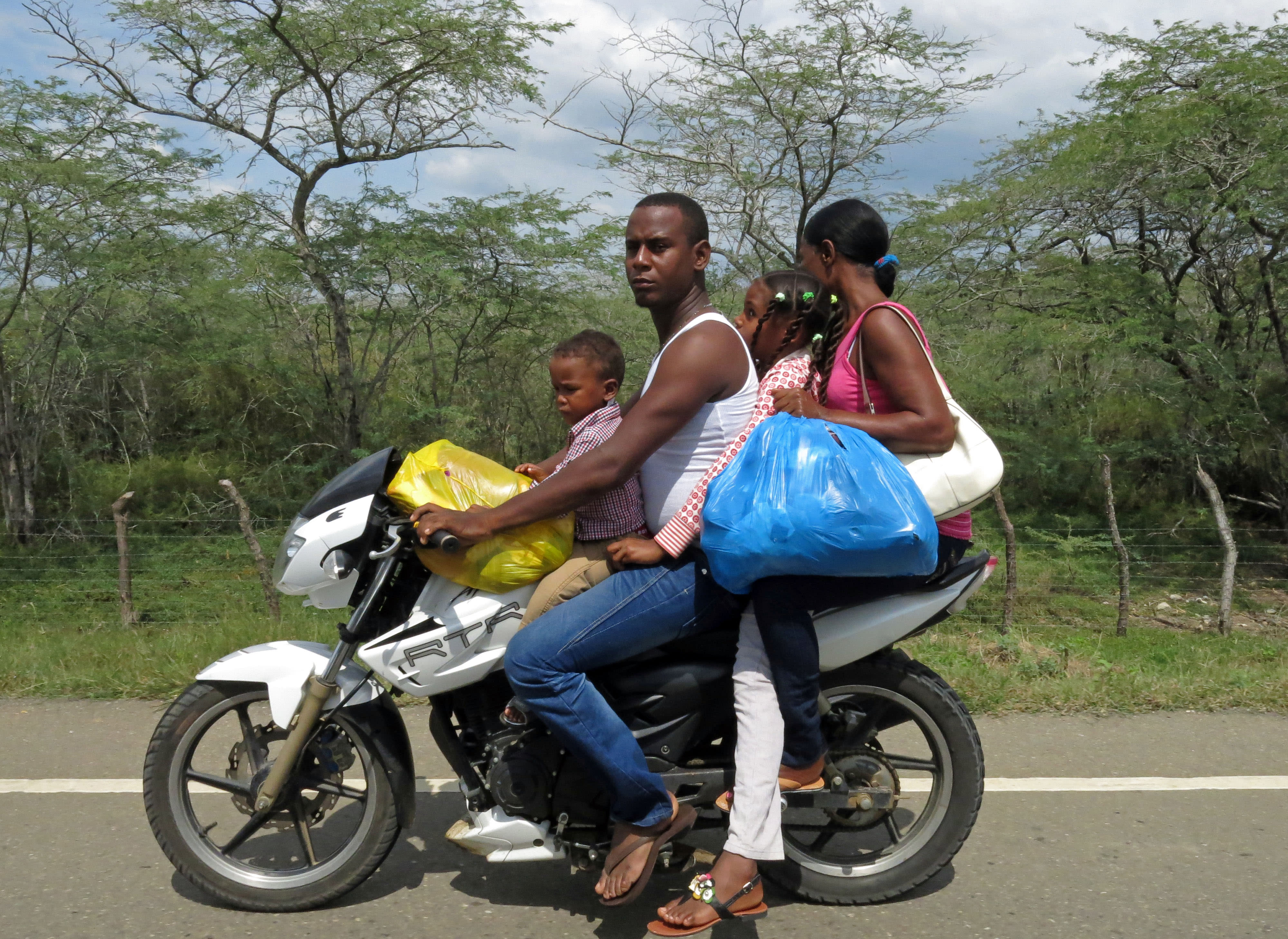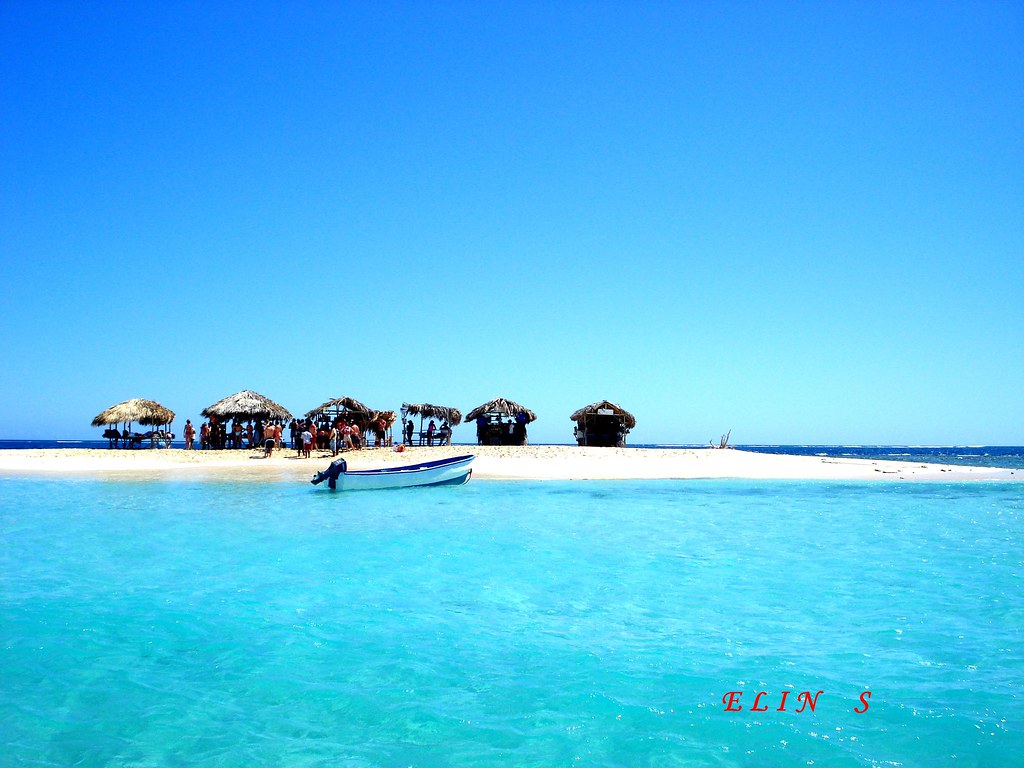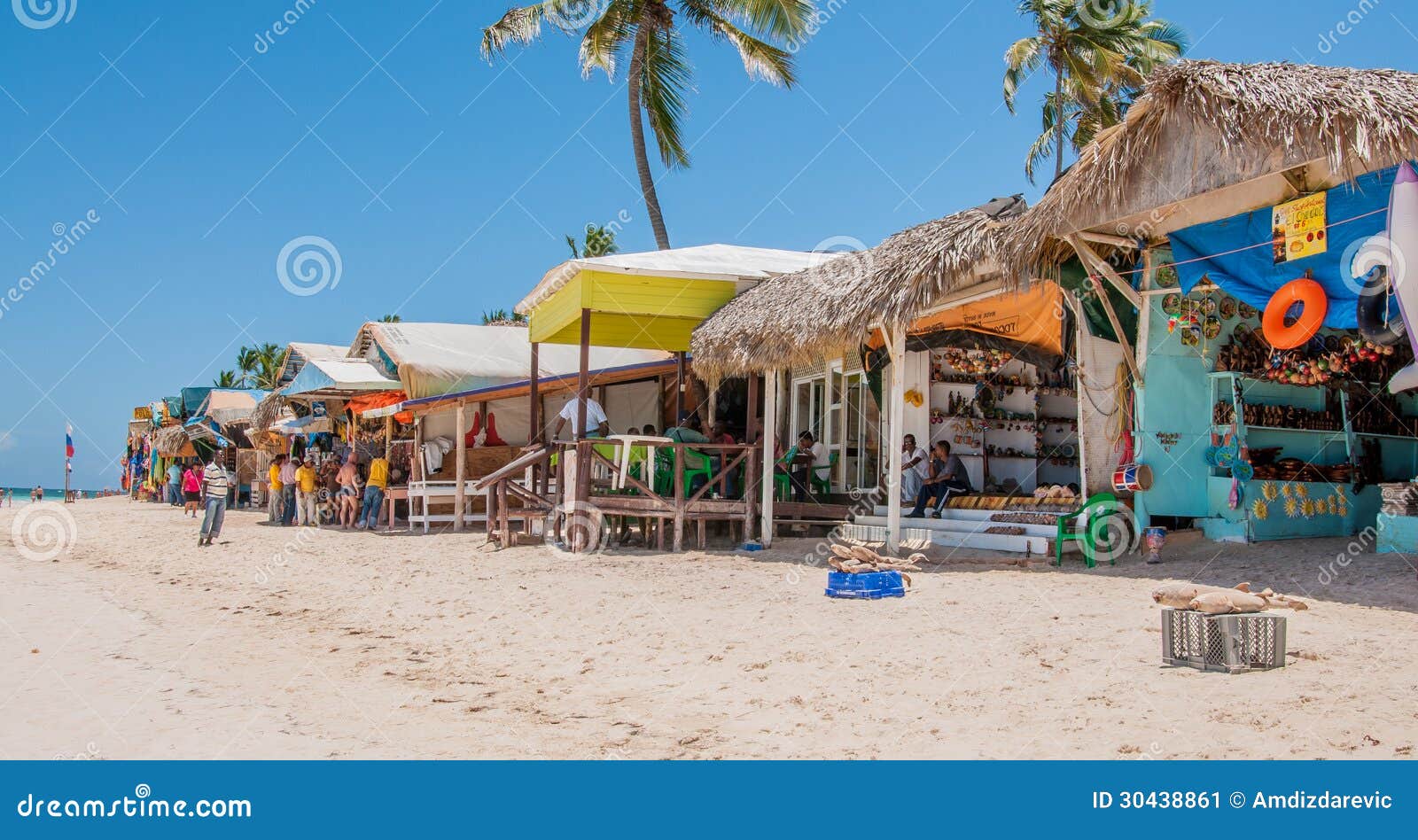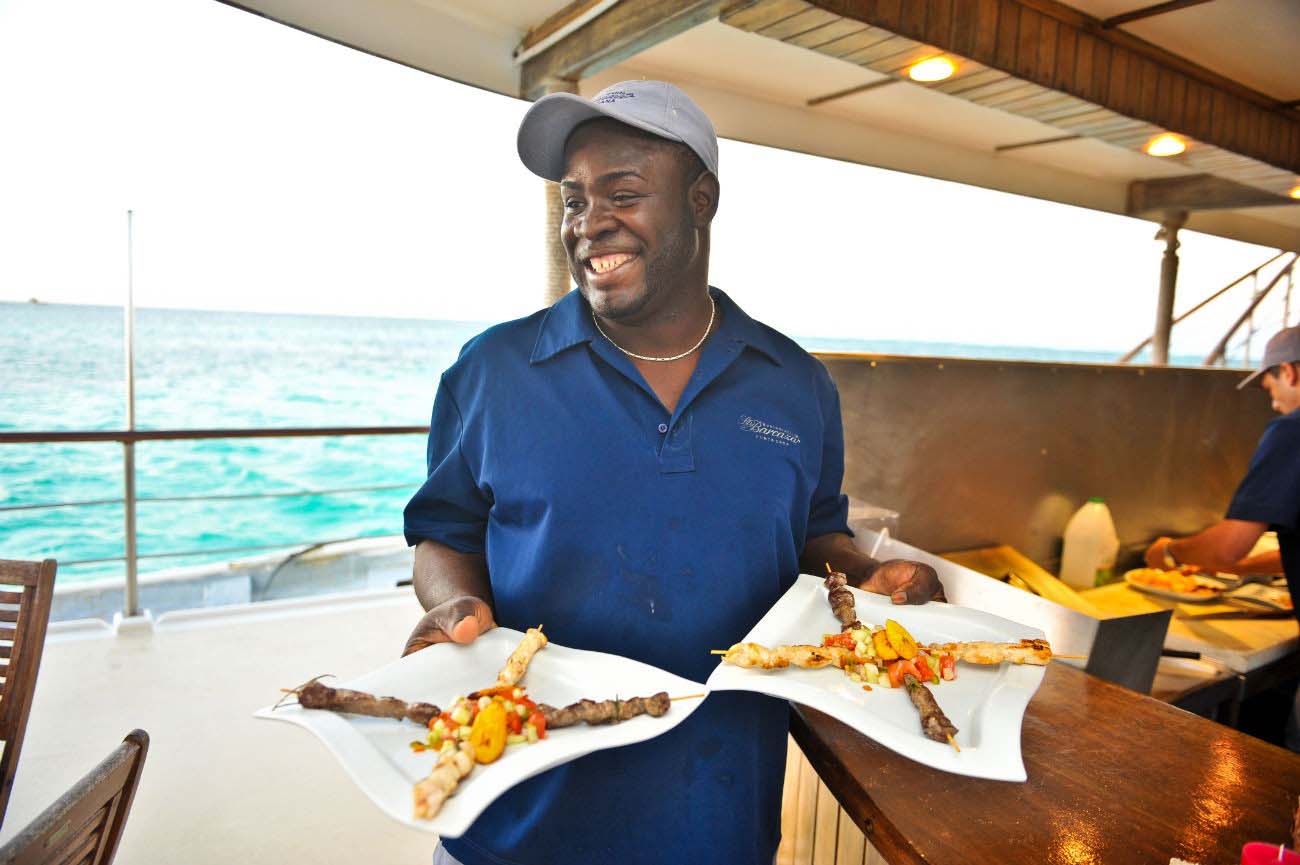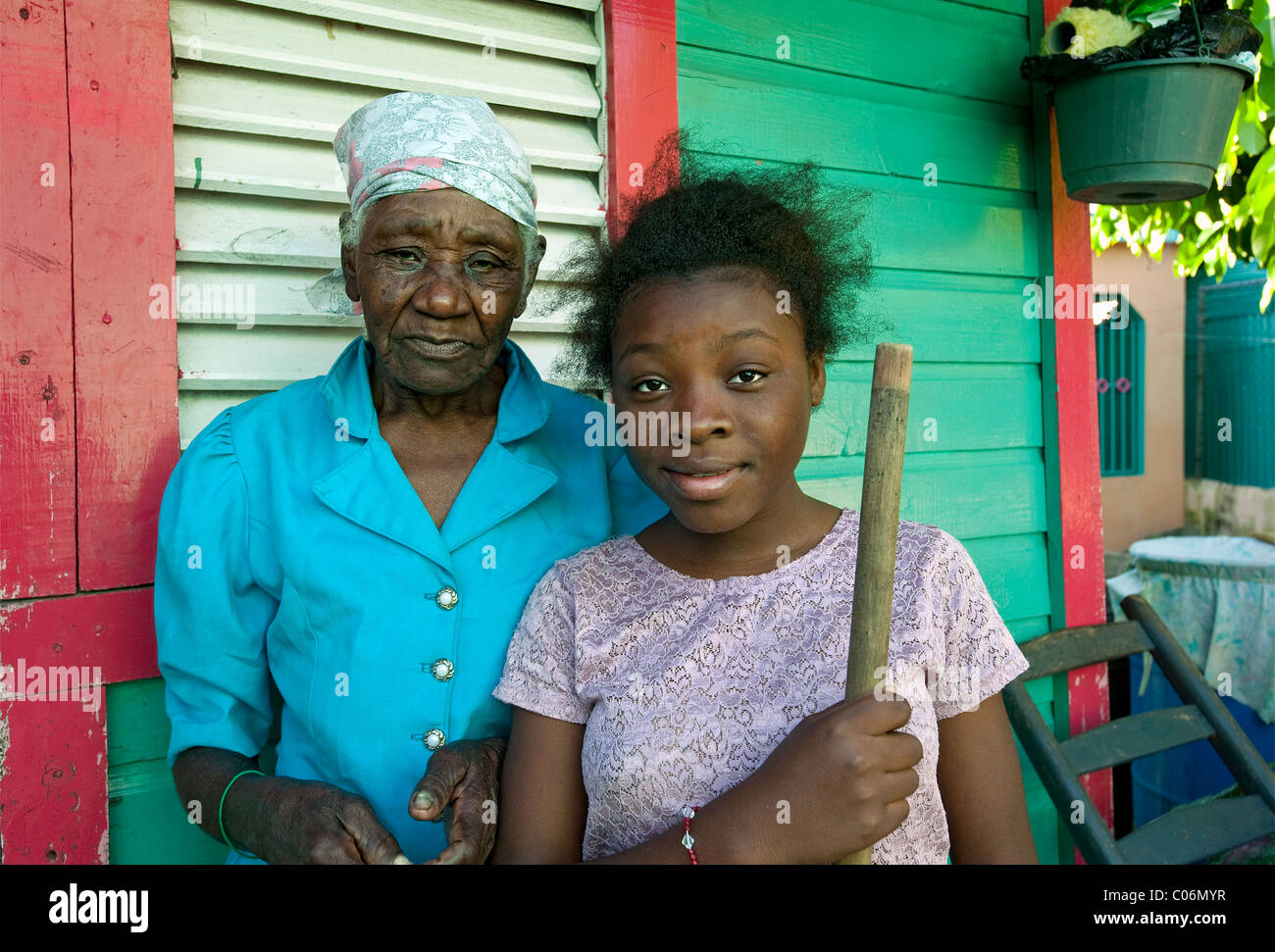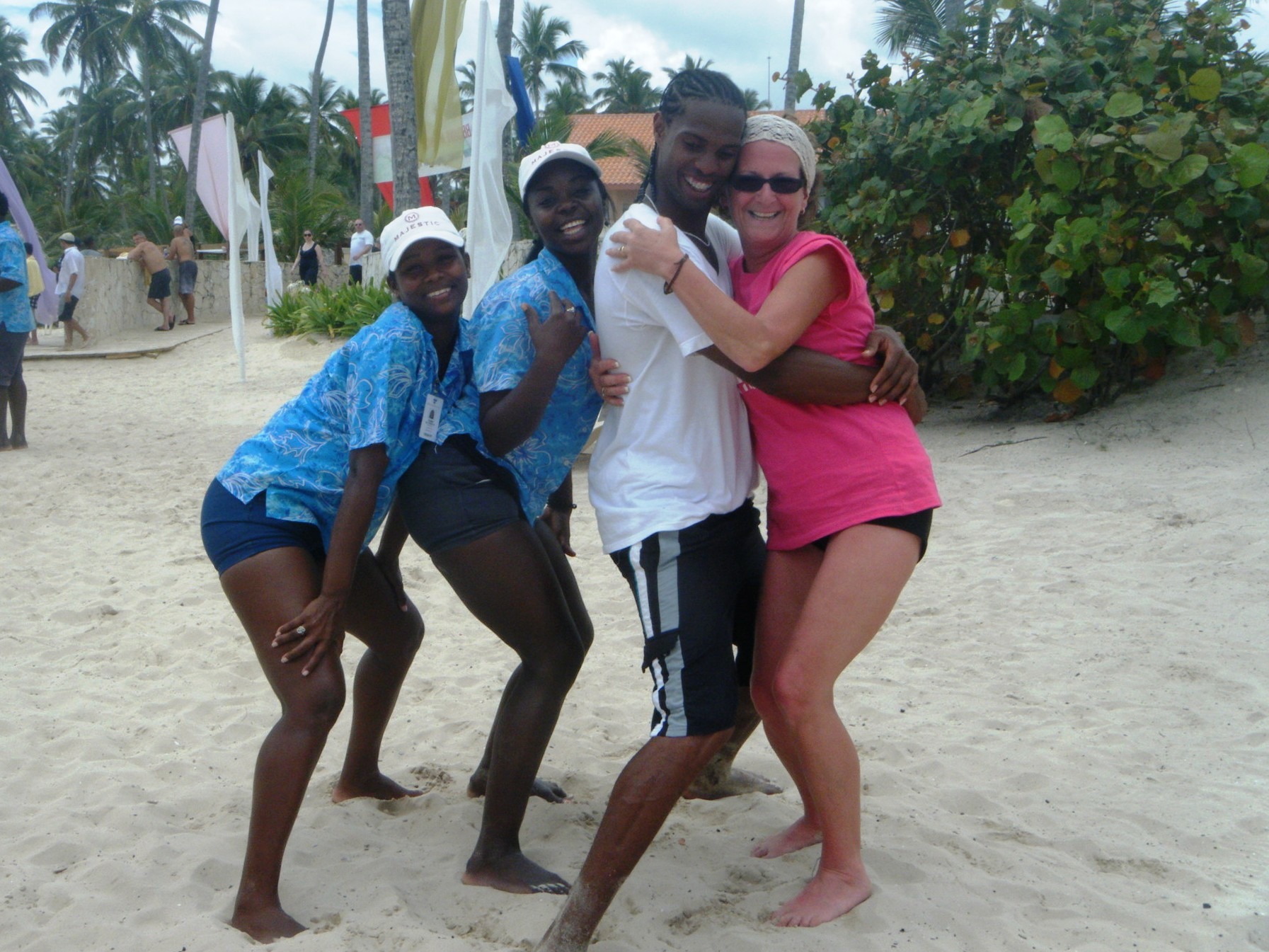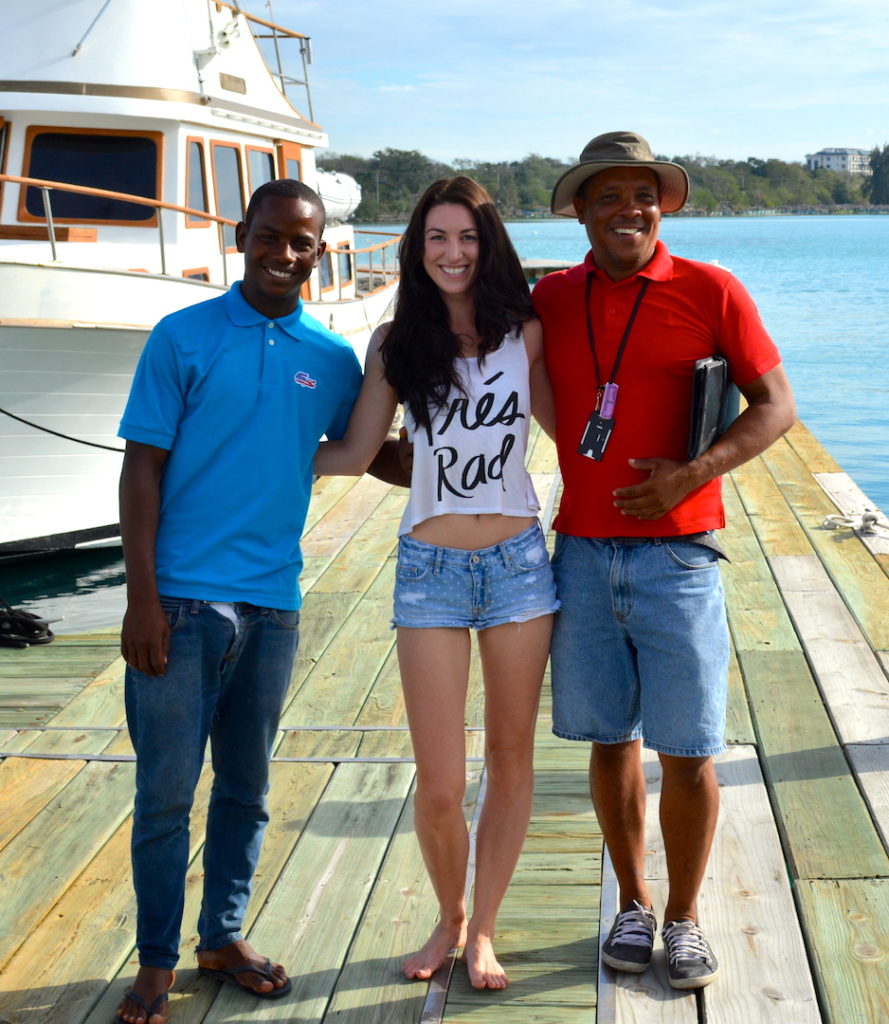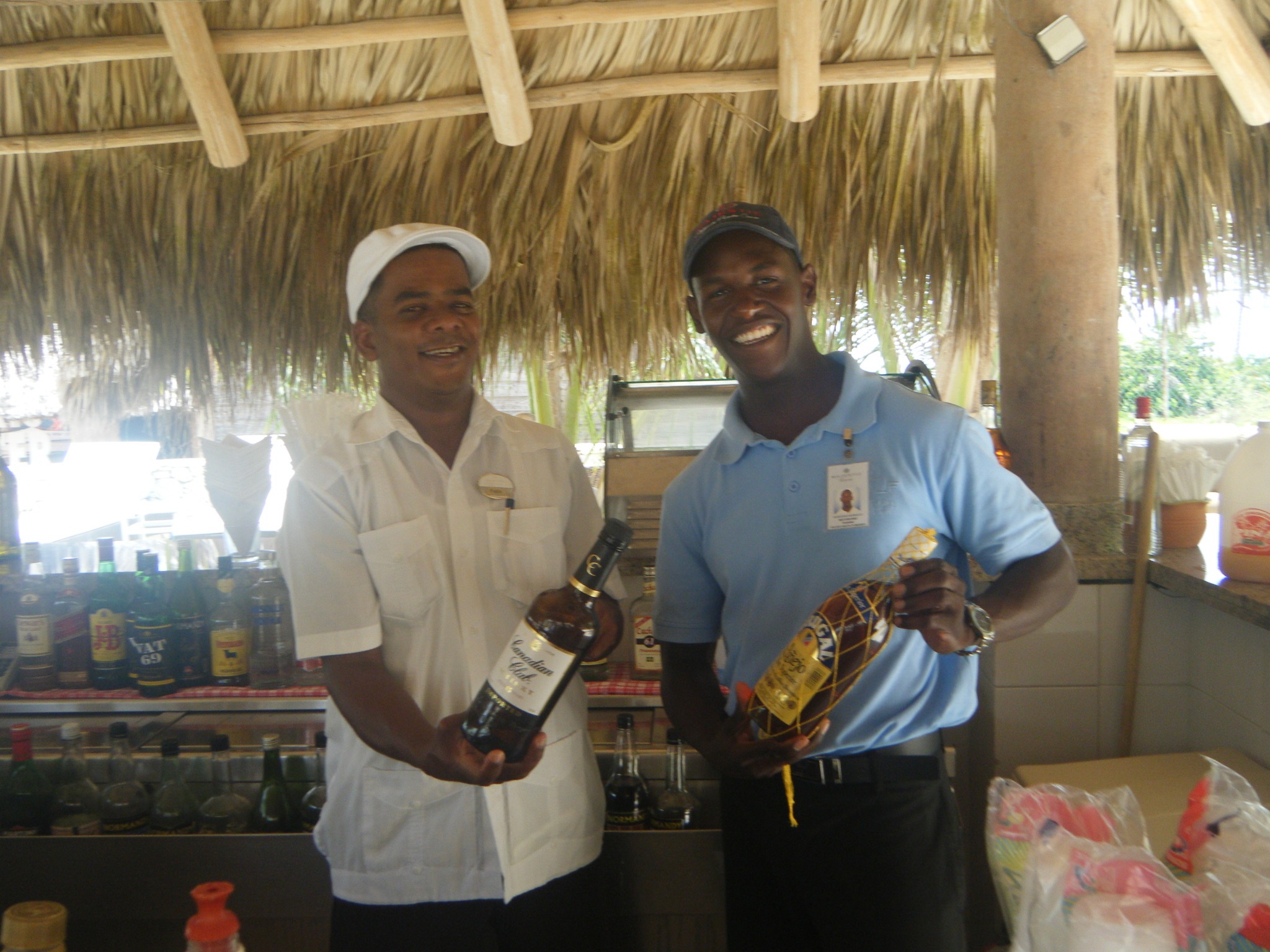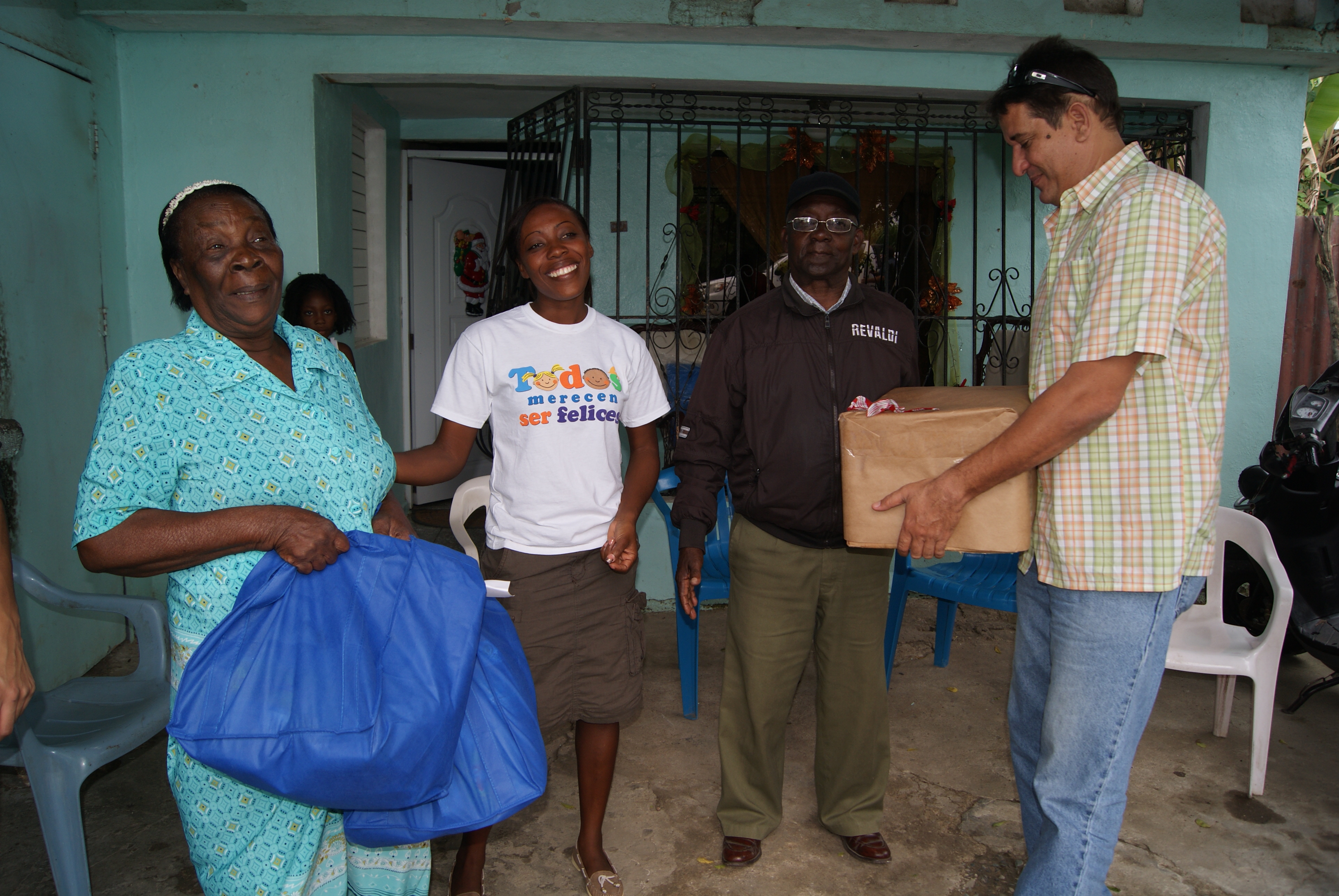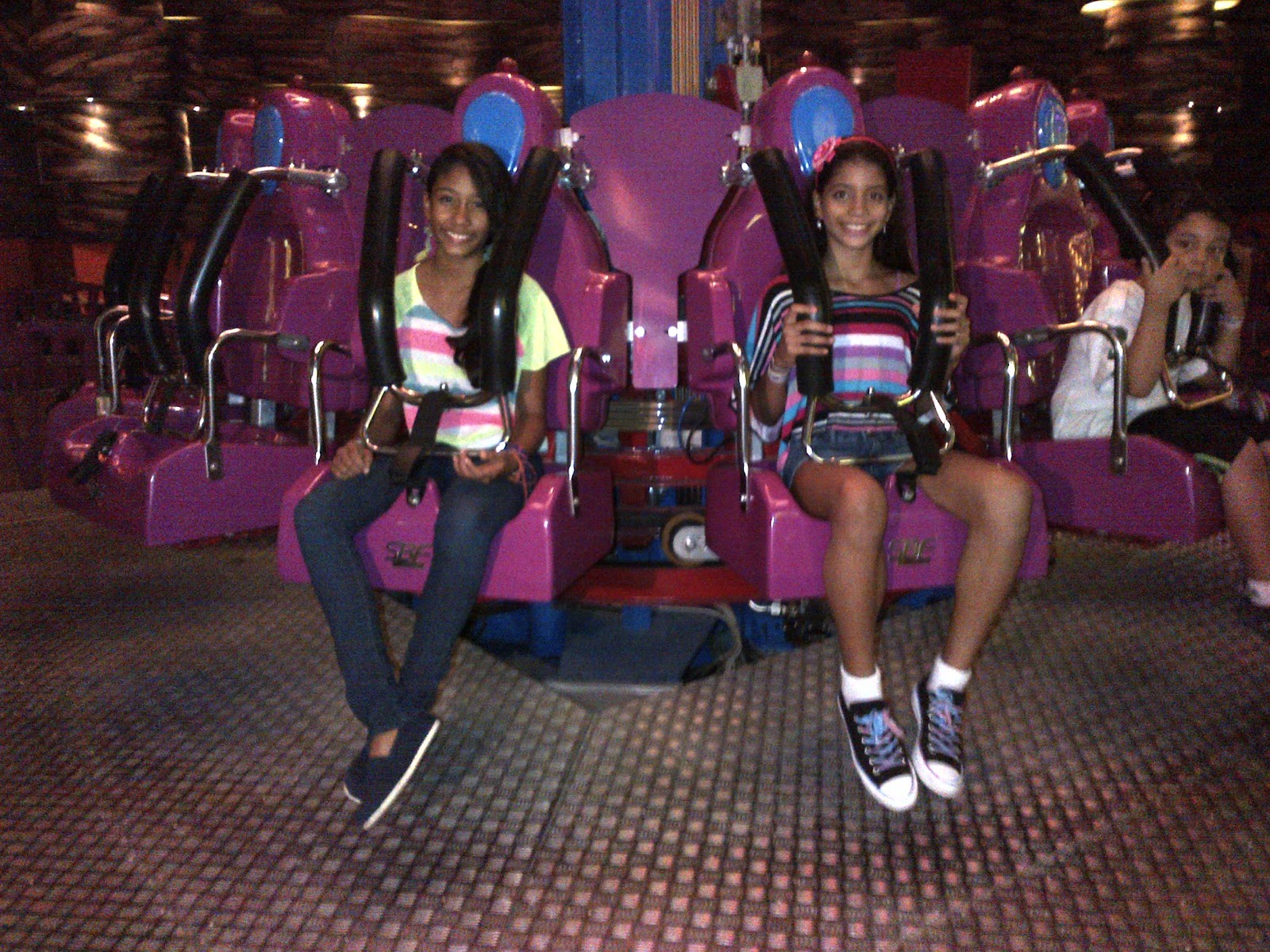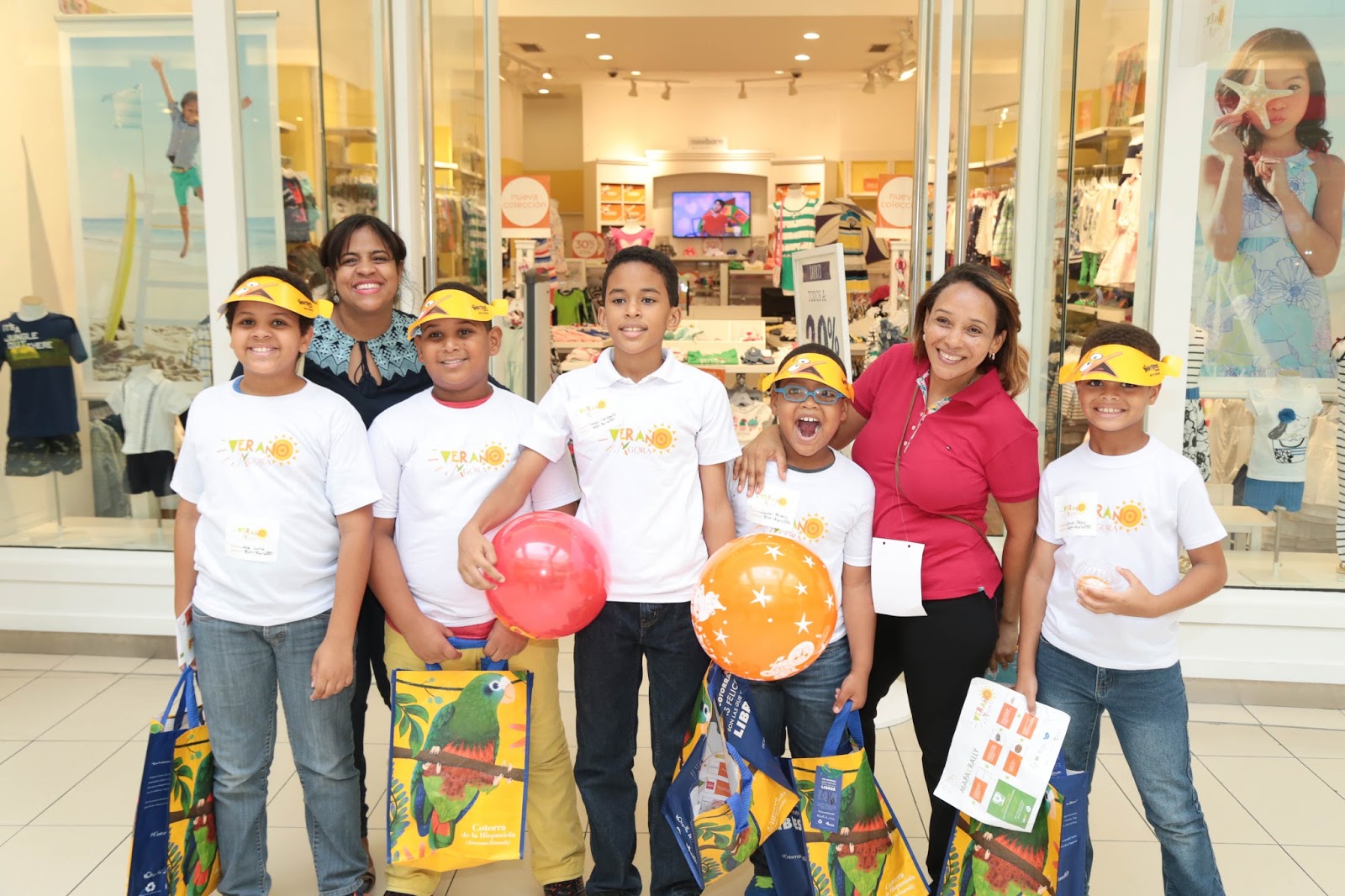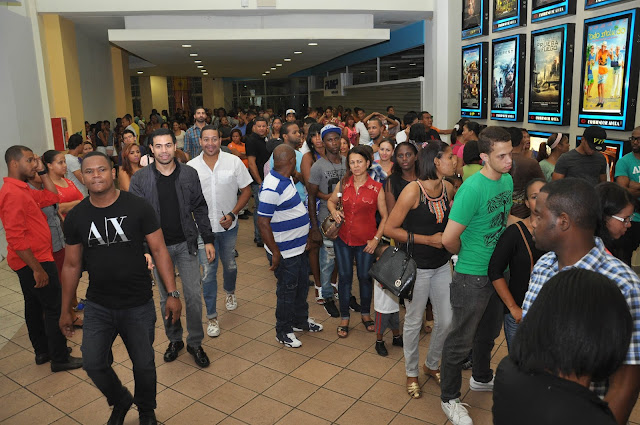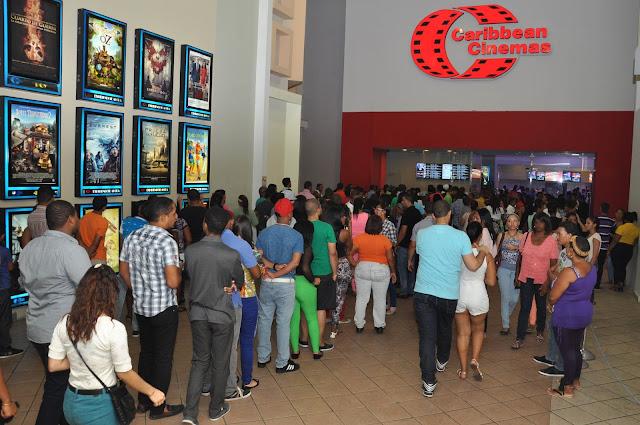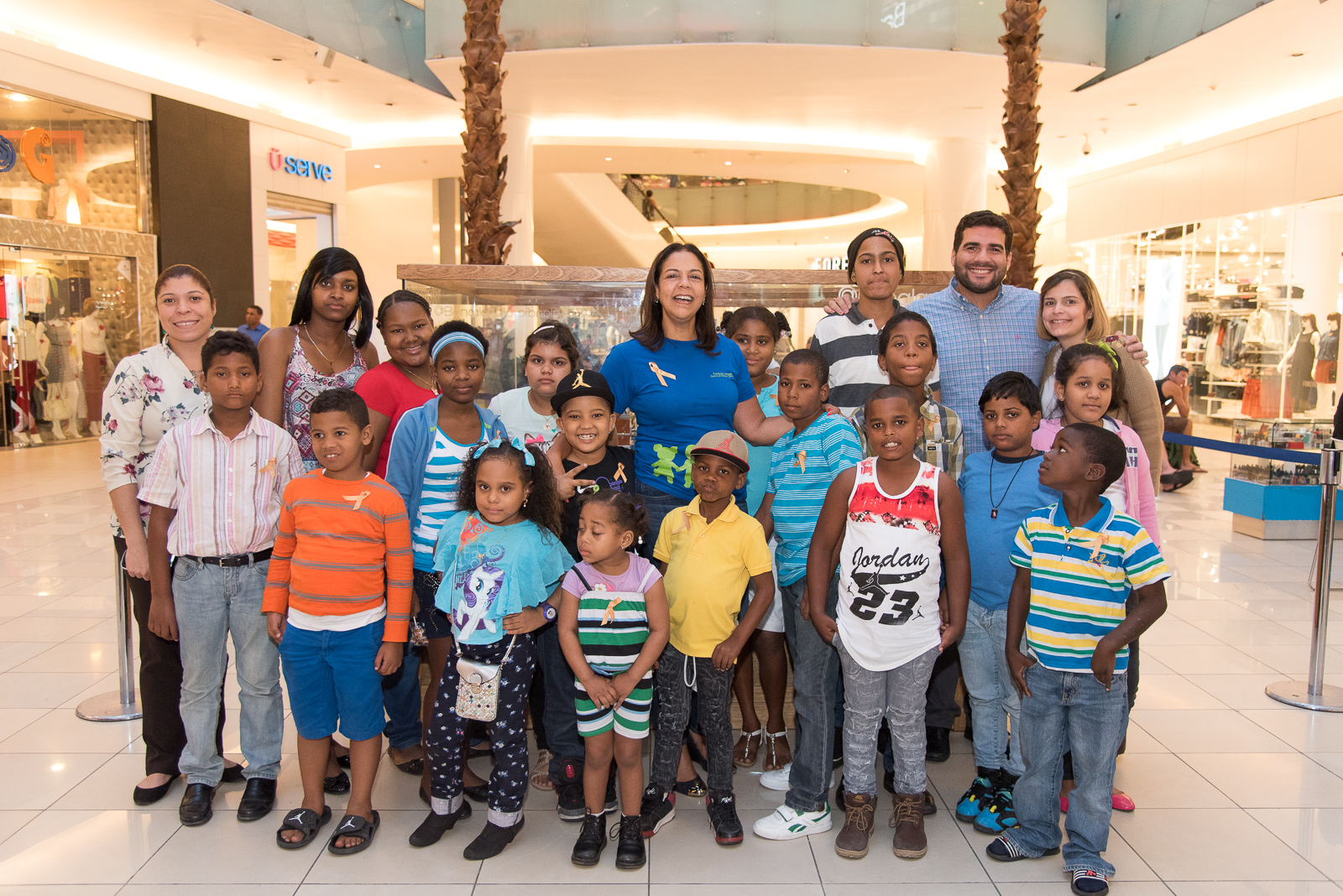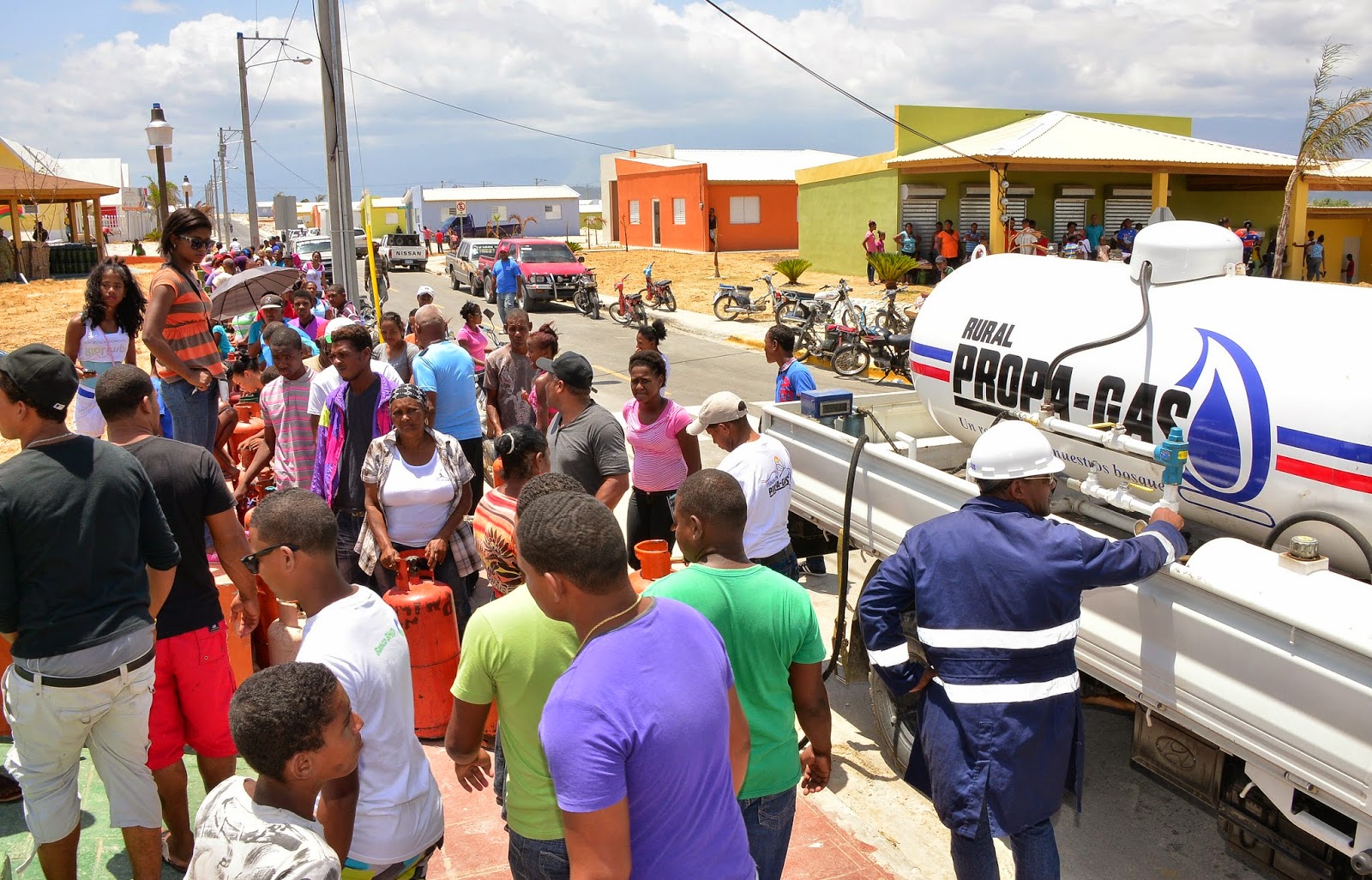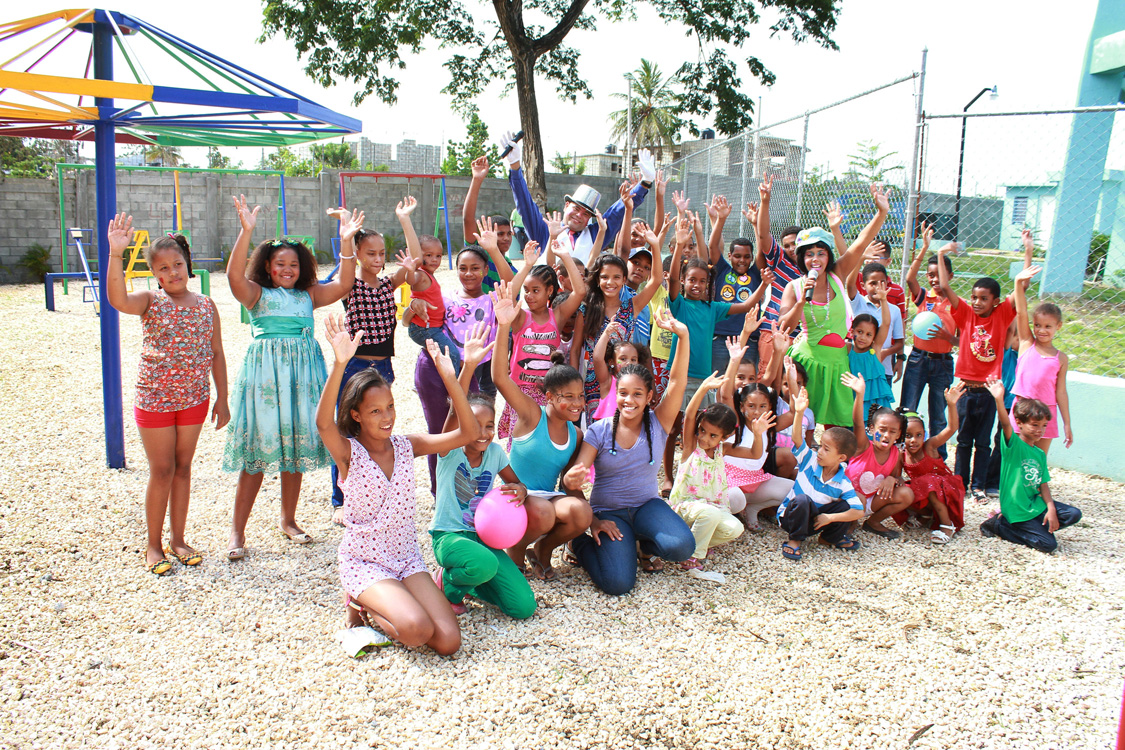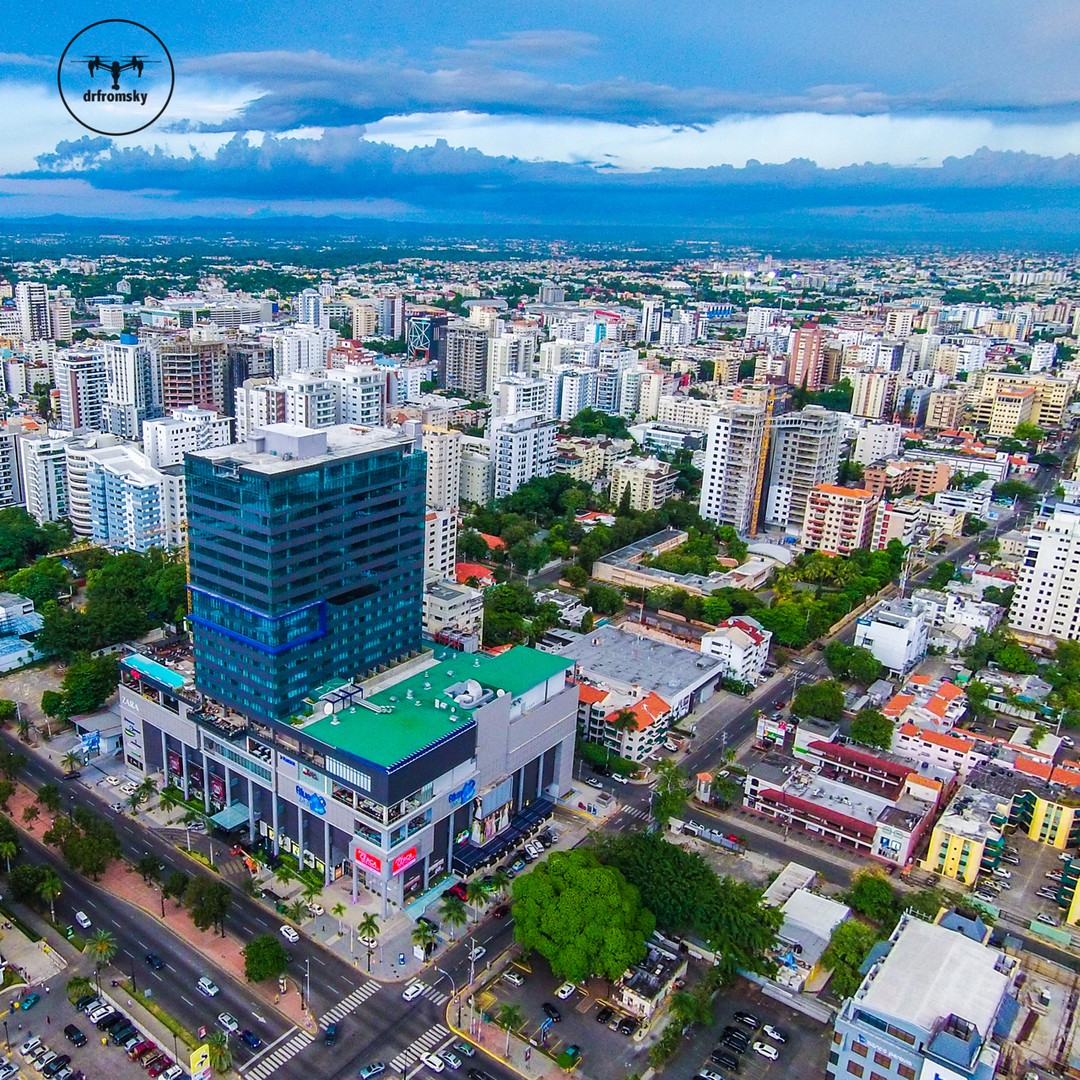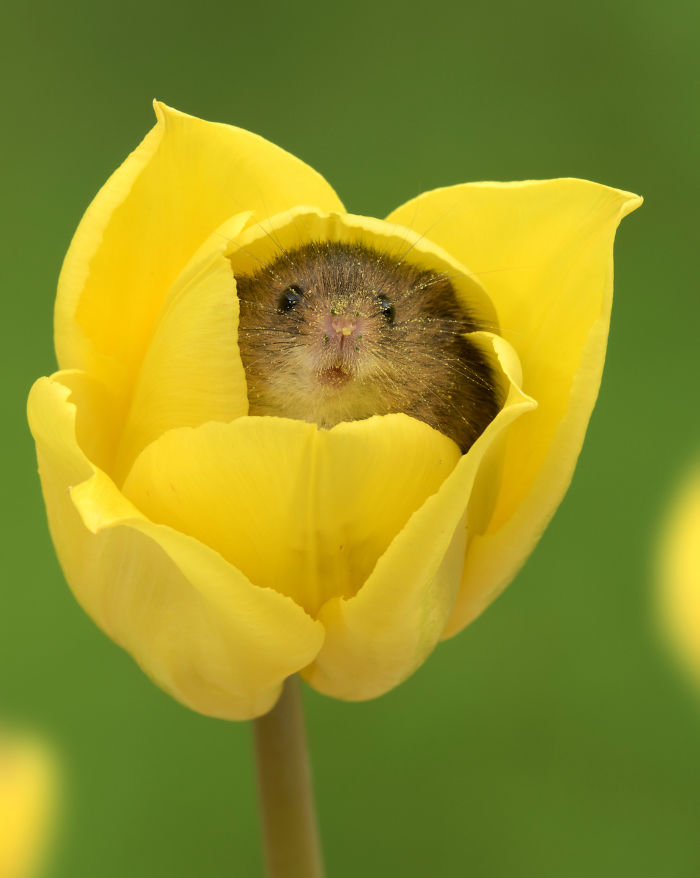Post by Dominicanese on Jan 6, 2017 23:30:19 GMT -4
Dominican Republic.

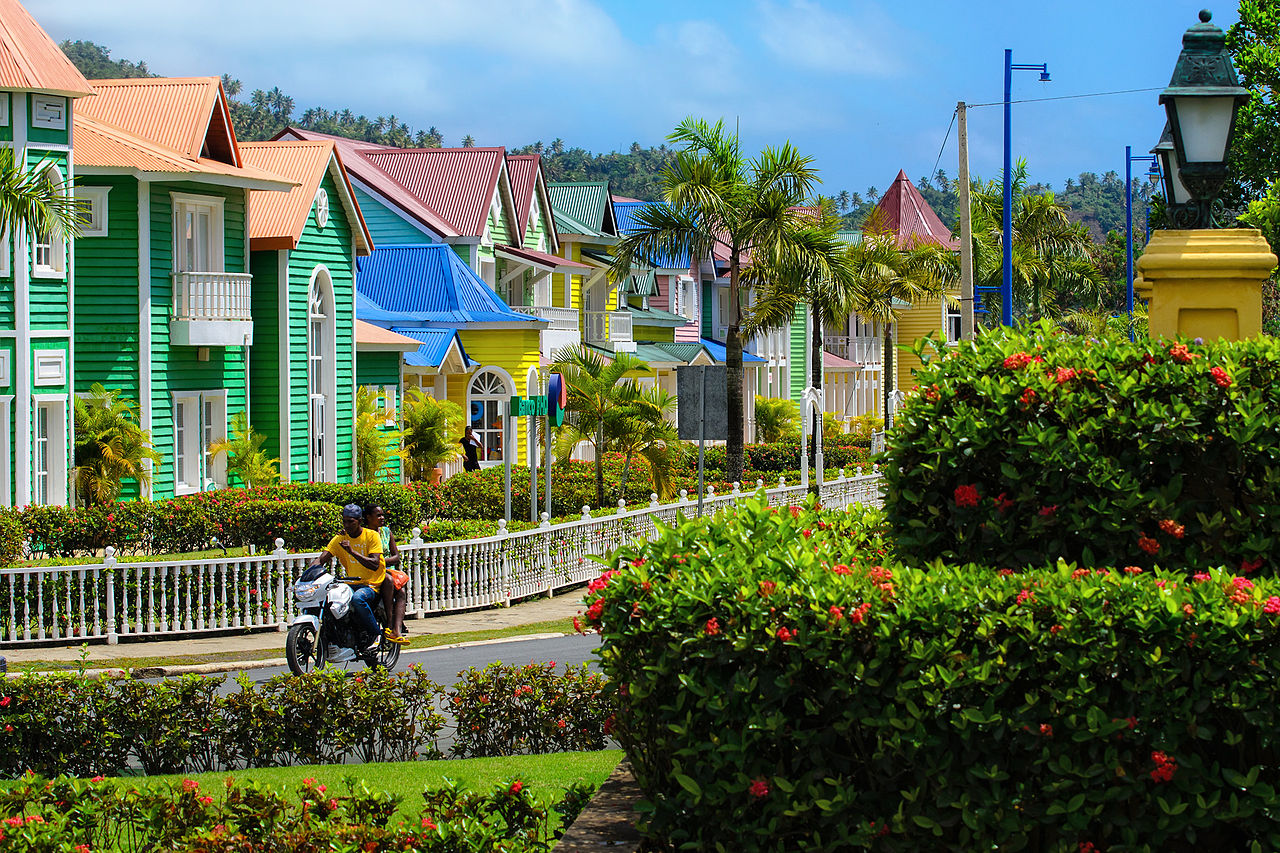
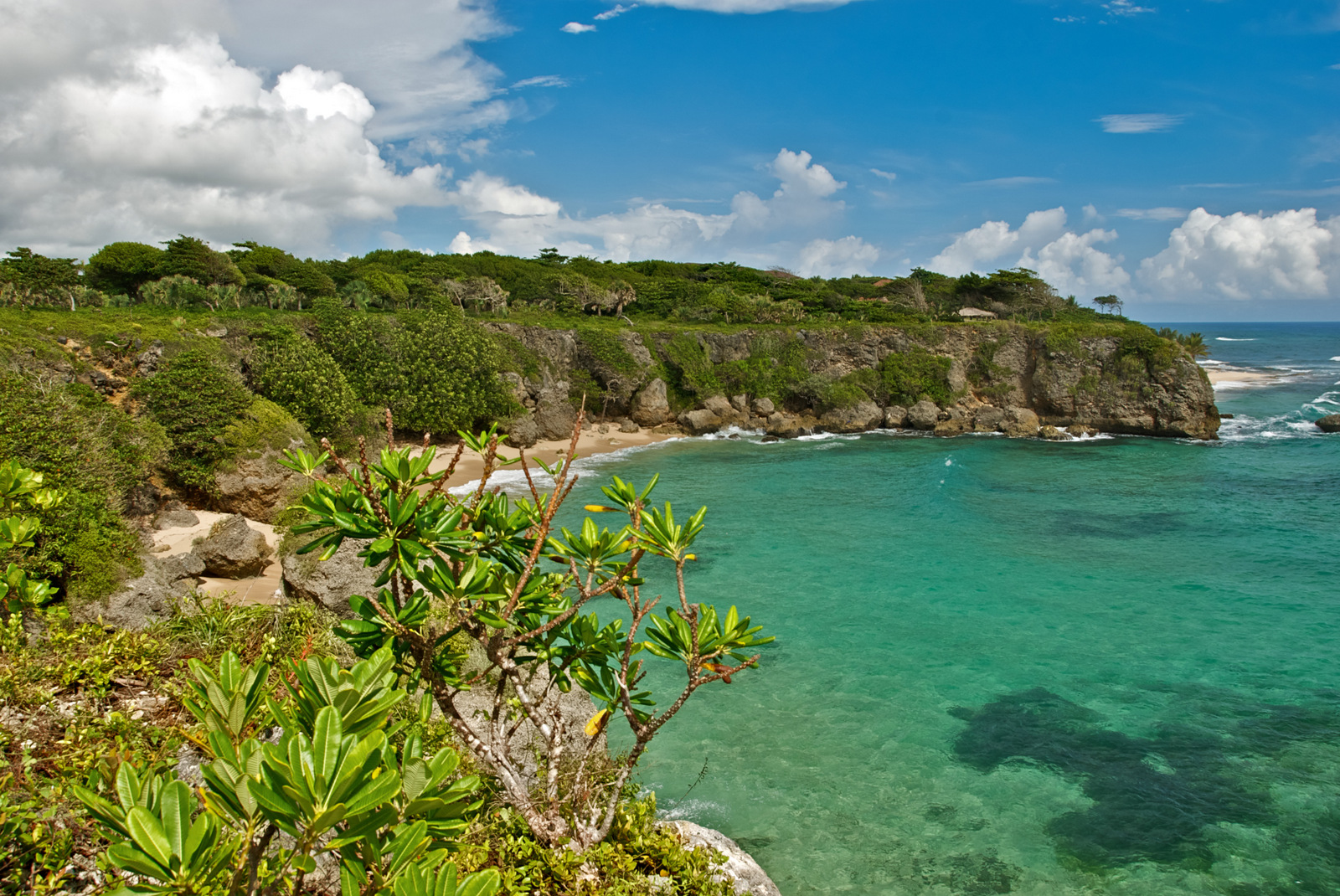
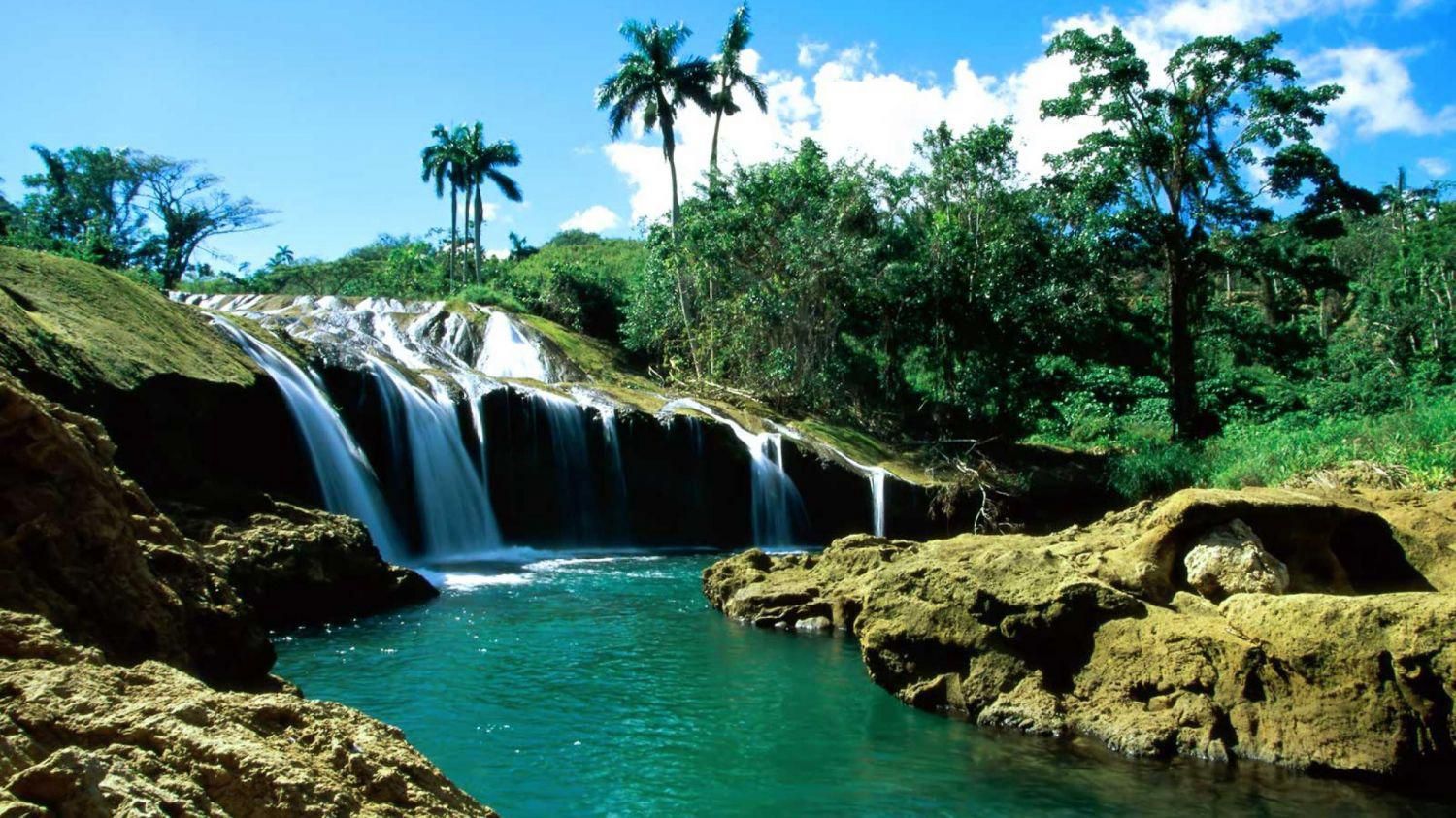

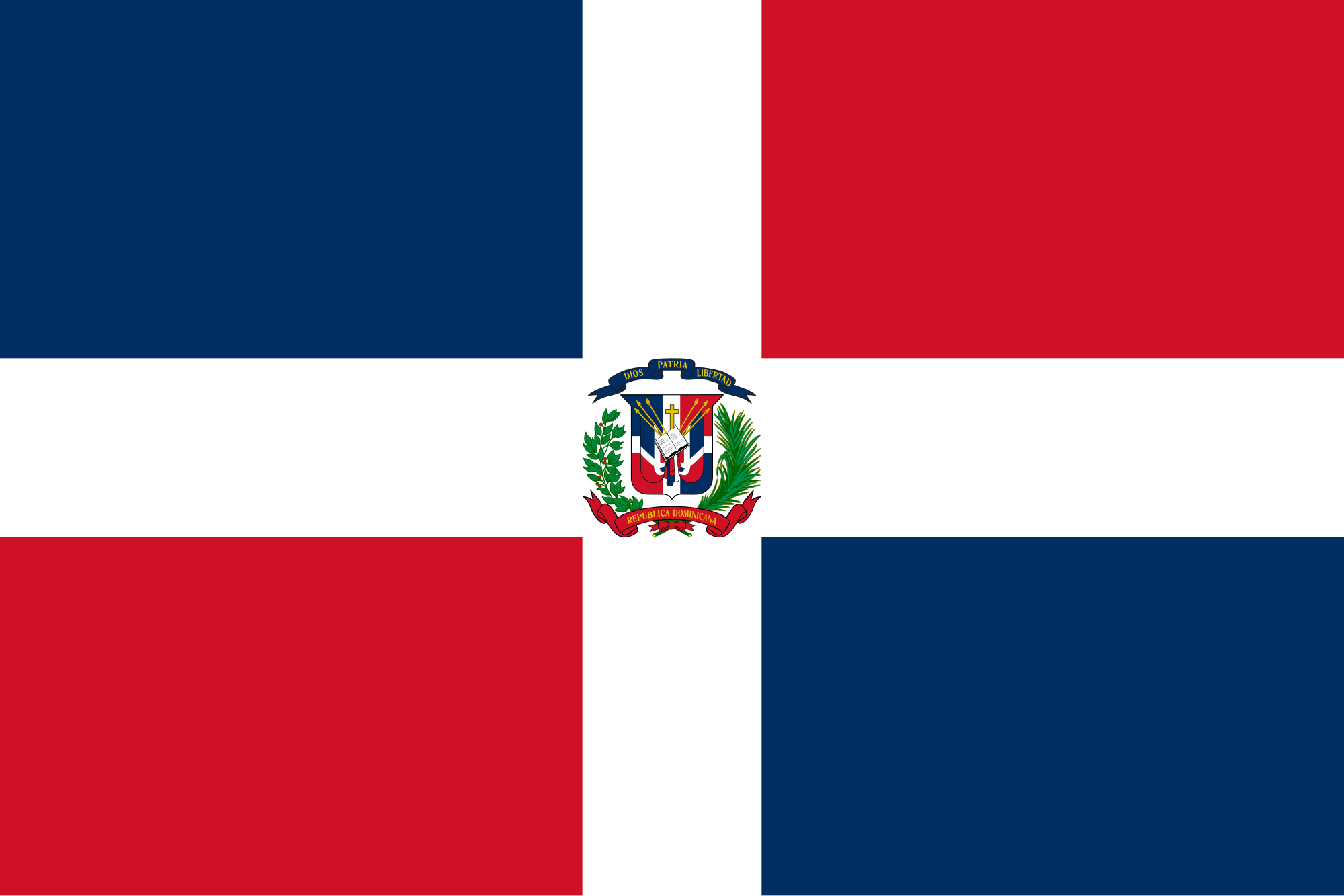
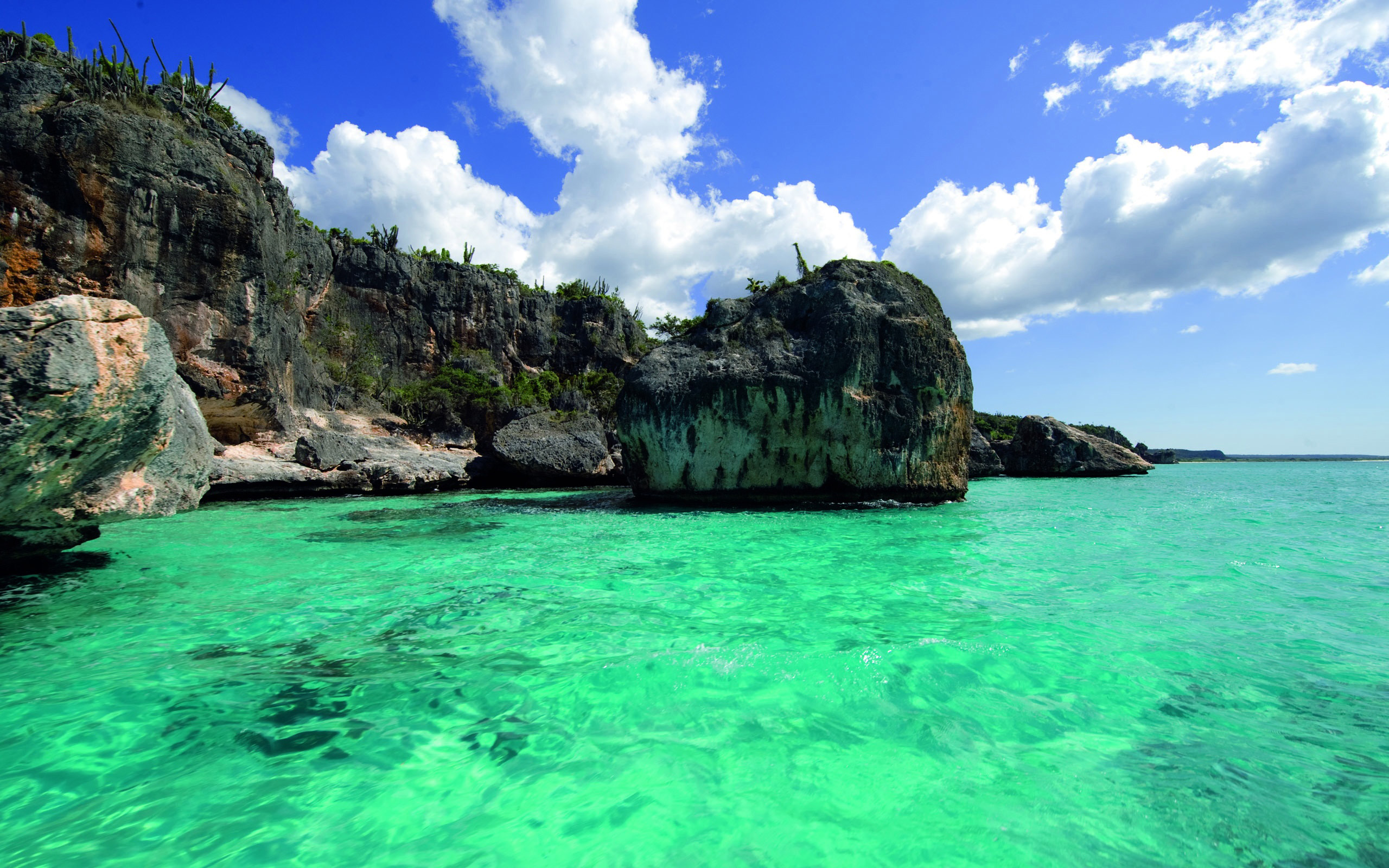
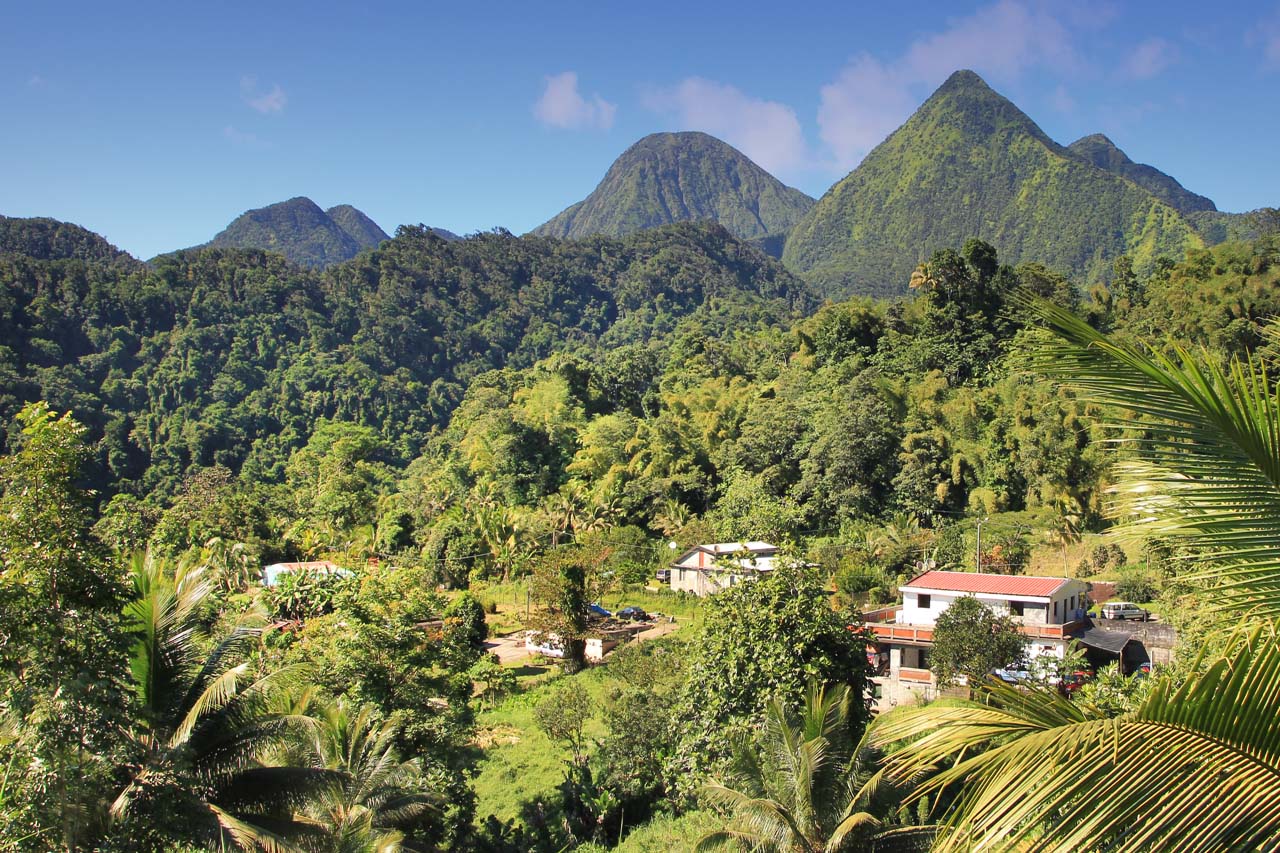



Culture:
The Dominican people and their customs have origins consisting predominately in a African & European cultural basis, with native Taíno influences. The Dominican Republic was the site of the first European settlement in the New World, namely Santo Domingo, founded in 1493.
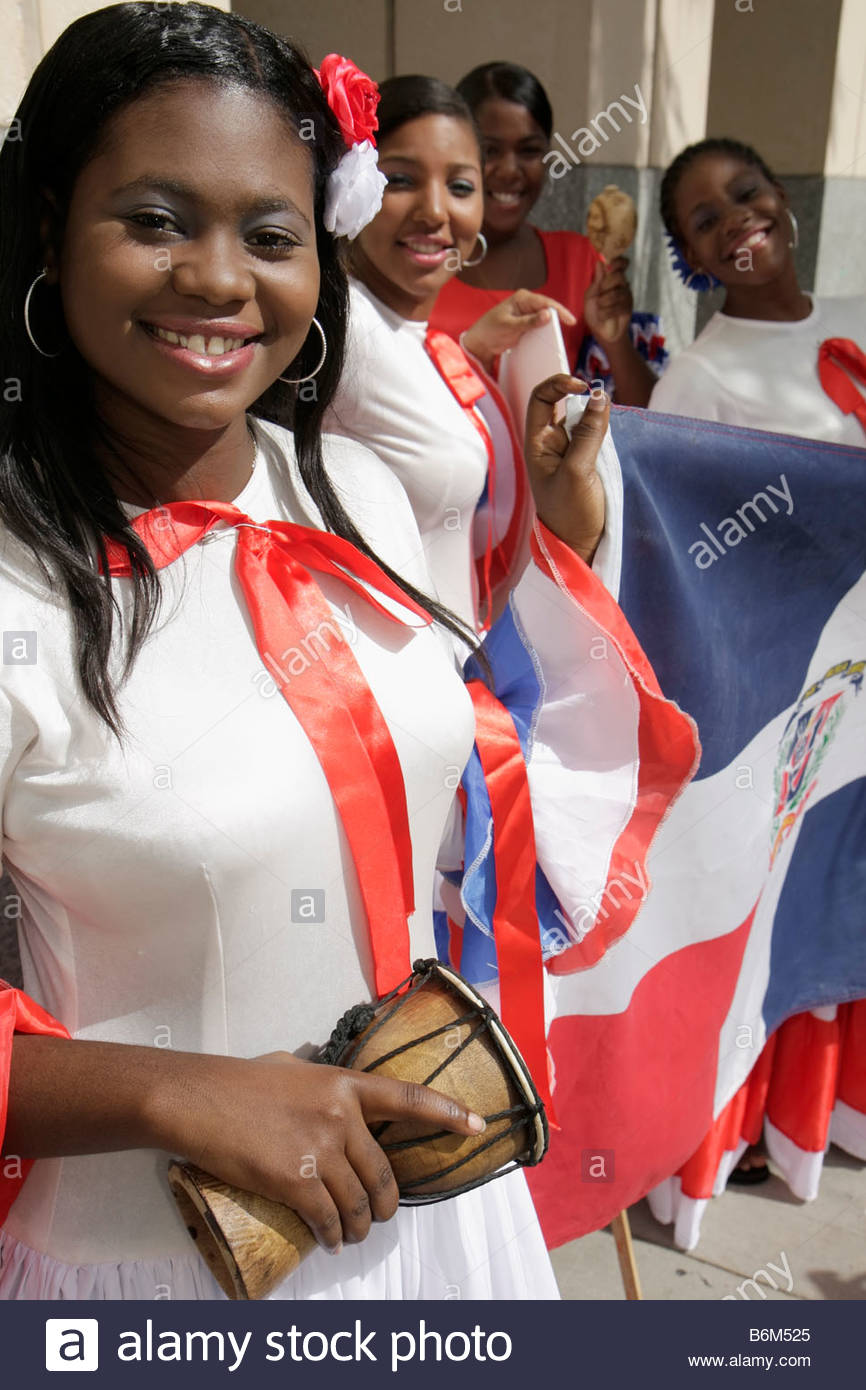
Shortly after the arrival of Europeans, African peoples were imported to the island to serve as slave labor. The fusion of European, African and Taino traditions and customs contributed to the development of present-day Dominican culture.
Cuisine:
Dominican Republic cuisine is predominantly made up of a combination of Spanish, indigenous Taíno, and African influences. Many Middle-Eastern dishes have been adopted into Dominican cuisine, such as the "Quipe" that comes from the Lebanese kibbeh. Dominican cuisine resembles that of other countries in Latin America, those of the nearby islands of Puerto Rico and Cuba, most of all, though the dish names differ sometimes.

A traditional breakfast would consist of mangú, fried eggs, fried salami, fried cheese and sometimes avocado. This is called "Los Tres Golpes" or "The Three Hits". As in Spain, the largest, most important meal of the day is lunch. Its most typical form, nicknamed La Bandera ("The Flag"), consists of rice, red beans and meat (beef, chicken, pork, or fish), sometimes accompanied by a side of salad.

Mangú – mashed, boiled plantain can be traced back to west Africa. The origin name of this dish is fufu. Still called fufu in parts Africa, Cuba and Puerto Rico and cayeye in Colombia . This is a typical and official national breakfast in the Dominican Republic but can also be served at lunch and dinner. Mangú is typically served with queso Frito (white cheese fried in a pan), Dominican salami, eggs and topped with onions cooked in vinegar. This is also known as los tres golpes (the three hits).

What Dominicans tend to eat depends highly on where they live: whether near the sea or in the interior mountains. In either case, most Dominican meat dishes tend to involve pork, as pigs are farmed quite heavily on the island. Meat dishes tend to be very well cooked or even stewed in Dominican restaurants, a tradition stemming from the lesser availability of refrigeration on the island.
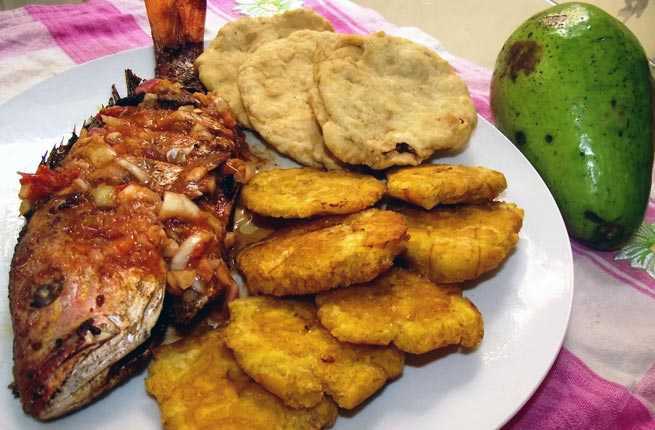
Seaside Dominican fishing villages will have great varieties of seafood, the most common being shrimp, marlin, mahi-mahi or dorado, and lobster. Most villagers more commonly dine on cheap, lesser-quality fish, usually stewed with la criolla, a type of rice. Premium seafood tends to be too expensive for the many locals, and is saved for the island's upper class and the tourist resorts.

Differences between Dominican cuisine and those of other parts of the West Indies include the milder spicing, which mainly uses onions, garlic, cilantro, cilantro ancho (culantro), ají cubanela (cubanelle pepper), and oregano. Dominican sofrito is known on the island as sazón.
Music:
The music of the Dominican Republic is primarily influenced by West African traditions, with some minor European, and native Taino influences. The Dominican Republic is mainly known for its merengue and bachata music, both of which are the most popular forms of music in the country.
Merengue is a musical genre native to the Dominican Republic. It has a moderate to very fast 2/4 rhythm played on güira (metal scraper) and the double-headed tambora. The accordion is also common. Traditional, accordion-based merengue is usually termed merengue típico and is still played by living accordionists like Francisco Ulloa, Fefita la Grande, El Ciego de Nagua, and Rafaelito Román. More modern merengues incorporate electric instruments and influences from salsa, and rock and roll. Choruses are often sung in a call and response form by two or three back-up singers, or more traditionally, by the musicians playing tambora or güira. Beginning in the 1960s, dancing became a part of the singers' work with Johnny Ventura's Combo Show format, and is now a staple of many of the genre's biggest stars. Lyrically, irony and double entendres are common Merengue continued to be limited in popularity to the lower classes, especially in the Cibao area, in the early 20th century. Artists like Juan F. García, Juan Espínola and Julio Alberto Hernández tried to move merengue into the mainstream, but failed, largely due to social prejudices. Some success occurred after nationalistic feelings arose among the Cibao elite who resented the U.S. occupation of the country from 1916–1924. Legend has it that at this time the faster (merengue típico cibaeño) was slowed down to accommodate American soldiers who couldn't dance the difficult steps of the merengue; this mid-tempo version was called pambiche. Major mainstream acceptance started with Rafael Trujillo's rise to power in the early 1930s.

Palo is an Afro-Dominican sacred music that can be found through the island. The drum and human voice are the principal instruments. Palo is played at religious ceremonies - usually coinciding with saint's days - as well as for secular parties and special occasions. Its roots are in the Congo region of central-west Africa, but it is mixed with European influences in the melodies. Palos are related to Dominican folk Catholicism, which includes a pantheon of deities/saints (here termed misterios) much like those found in the African derived syncretic religious traditions of Cuba, Brazil, Haiti, and elsewhere. Palos are usually associated with the lower class, black and mixed populations. They can be seen in different regions of Dominican Republic, but with variations.
Bachata, a form of music and dance that originated in the countryside and rural marginal neighborhoods of the Dominican Republic, has become quite popular in recent years. Its subjects are often romantic; especially prevalent are tales of heartbreak and sadness. In fact, the original name for the genre was amargue ("bitterness", or "bitter music", or blues music), until the rather ambiguous (and mood-neutral) term bachata became popular. Bachata grew out of, and is still closely related to, the pan-Latin American romantic style called bolero. Over time, it has been influenced by merengue and by a variety of Latin American guitar styles. Dominican rock is also popular among younger and not so younger crowds of the Dominican Republic. Dominican rock is influenced by British and American rock, but also has its own sense of unique style. The rock scene in the Dominican Republic has been very vibrant in recent years, spanning genres of rock such as pop rock, reggae/rock, and punk. There are also several underground Metal concerts occurring occasionally mainly in the cities of Santo Domingo and Santiago, where teenagers and young adults usually not satisfied with the other genres express themselves.
Ethnic Racial Composition:
* 90% Black & Mulatto
* 10% White
People:
Dominicans (Spanish: Dominicanos) are people who originate from the Dominican Republic. Dominican was historically the demonym for the inhabitants of the Captaincy General of Santo Domingo[citation needed], and was retained after the nation's independence was obtained. The majority of Dominicans reside in the Dominican Republic, although there is also a large Dominican diaspora, mainly in the United States (also in Spain, Canada and Puerto Rico to a lesser extent). The population of the Dominican Republic in 2007 was estimated by the United Nations at 9,760,000

While under Spanish rule during the 15th and late 19th centuries, the Dominican Republic employed the social system known as the caste system, categorizing people by their skin color. Remnants of this stratification remain to this day. Even though an estimated 90 percent of the contemporary Dominican population is of African descent, most Dominicans do not self-identify as black. There is a small minority of Whites, Asians, and Arab Dominicans as well.
Languages:
Spanish is the official language of the Dominican Republic. They also speak a local dialect in informal situations and it is known as Dominican Spanish. Dominican Spanish has it's roots in Andaluzian & Canarian Spanish, with influences from Portuguese and West-Central African languages. There can also be heard many words of Arawakan-Taino origin from the original language that was spoken there before European contact. An English dialect is also spoken in Samana, the North-East peninsula of the Dominican Republic. The dialect is known as Samana English.
Samana English has it's roots in South Irish, West-Country, and British English, with influences from Spanish and West African languages. The dialect was formed from the contact between English speaking people and West Africans (primarily Liberia). Samana during the colonization period was populated by many people from the British Isles while the Spanish had no knowledge of the peninsula even existing. They then brought over many African slaves and forced them to learn English which led to a Pidgin or an Early Creole language. Sometime later, the White settlers left and left behind their slaves. In 1824, around 6,000 freed African American slaves inbound for Liberia, arrived in Samana via The Bahamas and influenced the dialect some more. Samana English spoken by less than 8,000 people.
Religion:
The many kinds of religion in the Dominican Republic have been growing and changing. Historically, Catholicism dominated the religious practices of the small country. In modern times Protestant and non-Christian groups, like Buddhists, Jews, and Muslims, have experienced a population boom.
The Dominican Republic, being a nation full of African heritage was able to preserve some African religions, and aspects of them. A lot of the Afro-Caribbean religions in the country are syncretized with Catholicism, but not all to the same extent. Some may only use the image of saints but be completely Africanized in every other aspects. While some may be fully Christian with some African aspects.
Sports:
Baseball is by far the most popular sport in the Dominican Republic. The country has a baseball league of six teams. Its season usually begins in October and ends in January. After the United States, the Dominican Republic has the second highest number of Major League Baseball (MLB) players. Ozzie Virgil, Sr. became the first Dominican-born player in the MLB on September 23, 1956. Juan Marichal and Pedro Martinez are the only Dominican-born players in the Baseball Hall of Fame. Other notable baseball players born in the Dominican Republic are: Robinson Cano, Rico Carty, Starling Marte, Vladimir Guerrero, George Bell, Julian Javier, Francisco Liriano, Manny Ramírez, Jose Bautista, Edwin Encarnacion, Hanley Ramírez, David Ortiz, Albert Pujols, Nelson Cruz, Ubaldo Jiménez, José Reyes, Plácido Polanco, and Sammy Sosa. Felipe Alou has also enjoyed success as a manager and Omar Minaya as a general manager. In 2013, the Dominican team went undefeated en route to winning the World Baseball Classic.
Dominican video











Culture:
The Dominican people and their customs have origins consisting predominately in a African & European cultural basis, with native Taíno influences. The Dominican Republic was the site of the first European settlement in the New World, namely Santo Domingo, founded in 1493.

Shortly after the arrival of Europeans, African peoples were imported to the island to serve as slave labor. The fusion of European, African and Taino traditions and customs contributed to the development of present-day Dominican culture.
Cuisine:
Dominican Republic cuisine is predominantly made up of a combination of Spanish, indigenous Taíno, and African influences. Many Middle-Eastern dishes have been adopted into Dominican cuisine, such as the "Quipe" that comes from the Lebanese kibbeh. Dominican cuisine resembles that of other countries in Latin America, those of the nearby islands of Puerto Rico and Cuba, most of all, though the dish names differ sometimes.

A traditional breakfast would consist of mangú, fried eggs, fried salami, fried cheese and sometimes avocado. This is called "Los Tres Golpes" or "The Three Hits". As in Spain, the largest, most important meal of the day is lunch. Its most typical form, nicknamed La Bandera ("The Flag"), consists of rice, red beans and meat (beef, chicken, pork, or fish), sometimes accompanied by a side of salad.

Mangú – mashed, boiled plantain can be traced back to west Africa. The origin name of this dish is fufu. Still called fufu in parts Africa, Cuba and Puerto Rico and cayeye in Colombia . This is a typical and official national breakfast in the Dominican Republic but can also be served at lunch and dinner. Mangú is typically served with queso Frito (white cheese fried in a pan), Dominican salami, eggs and topped with onions cooked in vinegar. This is also known as los tres golpes (the three hits).

What Dominicans tend to eat depends highly on where they live: whether near the sea or in the interior mountains. In either case, most Dominican meat dishes tend to involve pork, as pigs are farmed quite heavily on the island. Meat dishes tend to be very well cooked or even stewed in Dominican restaurants, a tradition stemming from the lesser availability of refrigeration on the island.

Seaside Dominican fishing villages will have great varieties of seafood, the most common being shrimp, marlin, mahi-mahi or dorado, and lobster. Most villagers more commonly dine on cheap, lesser-quality fish, usually stewed with la criolla, a type of rice. Premium seafood tends to be too expensive for the many locals, and is saved for the island's upper class and the tourist resorts.

Differences between Dominican cuisine and those of other parts of the West Indies include the milder spicing, which mainly uses onions, garlic, cilantro, cilantro ancho (culantro), ají cubanela (cubanelle pepper), and oregano. Dominican sofrito is known on the island as sazón.
Music:
The music of the Dominican Republic is primarily influenced by West African traditions, with some minor European, and native Taino influences. The Dominican Republic is mainly known for its merengue and bachata music, both of which are the most popular forms of music in the country.
Merengue is a musical genre native to the Dominican Republic. It has a moderate to very fast 2/4 rhythm played on güira (metal scraper) and the double-headed tambora. The accordion is also common. Traditional, accordion-based merengue is usually termed merengue típico and is still played by living accordionists like Francisco Ulloa, Fefita la Grande, El Ciego de Nagua, and Rafaelito Román. More modern merengues incorporate electric instruments and influences from salsa, and rock and roll. Choruses are often sung in a call and response form by two or three back-up singers, or more traditionally, by the musicians playing tambora or güira. Beginning in the 1960s, dancing became a part of the singers' work with Johnny Ventura's Combo Show format, and is now a staple of many of the genre's biggest stars. Lyrically, irony and double entendres are common Merengue continued to be limited in popularity to the lower classes, especially in the Cibao area, in the early 20th century. Artists like Juan F. García, Juan Espínola and Julio Alberto Hernández tried to move merengue into the mainstream, but failed, largely due to social prejudices. Some success occurred after nationalistic feelings arose among the Cibao elite who resented the U.S. occupation of the country from 1916–1924. Legend has it that at this time the faster (merengue típico cibaeño) was slowed down to accommodate American soldiers who couldn't dance the difficult steps of the merengue; this mid-tempo version was called pambiche. Major mainstream acceptance started with Rafael Trujillo's rise to power in the early 1930s.

Palo is an Afro-Dominican sacred music that can be found through the island. The drum and human voice are the principal instruments. Palo is played at religious ceremonies - usually coinciding with saint's days - as well as for secular parties and special occasions. Its roots are in the Congo region of central-west Africa, but it is mixed with European influences in the melodies. Palos are related to Dominican folk Catholicism, which includes a pantheon of deities/saints (here termed misterios) much like those found in the African derived syncretic religious traditions of Cuba, Brazil, Haiti, and elsewhere. Palos are usually associated with the lower class, black and mixed populations. They can be seen in different regions of Dominican Republic, but with variations.
Bachata, a form of music and dance that originated in the countryside and rural marginal neighborhoods of the Dominican Republic, has become quite popular in recent years. Its subjects are often romantic; especially prevalent are tales of heartbreak and sadness. In fact, the original name for the genre was amargue ("bitterness", or "bitter music", or blues music), until the rather ambiguous (and mood-neutral) term bachata became popular. Bachata grew out of, and is still closely related to, the pan-Latin American romantic style called bolero. Over time, it has been influenced by merengue and by a variety of Latin American guitar styles. Dominican rock is also popular among younger and not so younger crowds of the Dominican Republic. Dominican rock is influenced by British and American rock, but also has its own sense of unique style. The rock scene in the Dominican Republic has been very vibrant in recent years, spanning genres of rock such as pop rock, reggae/rock, and punk. There are also several underground Metal concerts occurring occasionally mainly in the cities of Santo Domingo and Santiago, where teenagers and young adults usually not satisfied with the other genres express themselves.
Ethnic Racial Composition:
* 90% Black & Mulatto
* 10% White
People:
Dominicans (Spanish: Dominicanos) are people who originate from the Dominican Republic. Dominican was historically the demonym for the inhabitants of the Captaincy General of Santo Domingo[citation needed], and was retained after the nation's independence was obtained. The majority of Dominicans reside in the Dominican Republic, although there is also a large Dominican diaspora, mainly in the United States (also in Spain, Canada and Puerto Rico to a lesser extent). The population of the Dominican Republic in 2007 was estimated by the United Nations at 9,760,000

While under Spanish rule during the 15th and late 19th centuries, the Dominican Republic employed the social system known as the caste system, categorizing people by their skin color. Remnants of this stratification remain to this day. Even though an estimated 90 percent of the contemporary Dominican population is of African descent, most Dominicans do not self-identify as black. There is a small minority of Whites, Asians, and Arab Dominicans as well.
Languages:
Spanish is the official language of the Dominican Republic. They also speak a local dialect in informal situations and it is known as Dominican Spanish. Dominican Spanish has it's roots in Andaluzian & Canarian Spanish, with influences from Portuguese and West-Central African languages. There can also be heard many words of Arawakan-Taino origin from the original language that was spoken there before European contact. An English dialect is also spoken in Samana, the North-East peninsula of the Dominican Republic. The dialect is known as Samana English.
Samana English has it's roots in South Irish, West-Country, and British English, with influences from Spanish and West African languages. The dialect was formed from the contact between English speaking people and West Africans (primarily Liberia). Samana during the colonization period was populated by many people from the British Isles while the Spanish had no knowledge of the peninsula even existing. They then brought over many African slaves and forced them to learn English which led to a Pidgin or an Early Creole language. Sometime later, the White settlers left and left behind their slaves. In 1824, around 6,000 freed African American slaves inbound for Liberia, arrived in Samana via The Bahamas and influenced the dialect some more. Samana English spoken by less than 8,000 people.
Religion:
The many kinds of religion in the Dominican Republic have been growing and changing. Historically, Catholicism dominated the religious practices of the small country. In modern times Protestant and non-Christian groups, like Buddhists, Jews, and Muslims, have experienced a population boom.
The Dominican Republic, being a nation full of African heritage was able to preserve some African religions, and aspects of them. A lot of the Afro-Caribbean religions in the country are syncretized with Catholicism, but not all to the same extent. Some may only use the image of saints but be completely Africanized in every other aspects. While some may be fully Christian with some African aspects.
Sports:
Baseball is by far the most popular sport in the Dominican Republic. The country has a baseball league of six teams. Its season usually begins in October and ends in January. After the United States, the Dominican Republic has the second highest number of Major League Baseball (MLB) players. Ozzie Virgil, Sr. became the first Dominican-born player in the MLB on September 23, 1956. Juan Marichal and Pedro Martinez are the only Dominican-born players in the Baseball Hall of Fame. Other notable baseball players born in the Dominican Republic are: Robinson Cano, Rico Carty, Starling Marte, Vladimir Guerrero, George Bell, Julian Javier, Francisco Liriano, Manny Ramírez, Jose Bautista, Edwin Encarnacion, Hanley Ramírez, David Ortiz, Albert Pujols, Nelson Cruz, Ubaldo Jiménez, José Reyes, Plácido Polanco, and Sammy Sosa. Felipe Alou has also enjoyed success as a manager and Omar Minaya as a general manager. In 2013, the Dominican team went undefeated en route to winning the World Baseball Classic.
Dominican video
 Playing the Race Card
Playing the Race Card


